
1890 Station Plan
1937 Signal Diagram
1979 Signal Diagram
1929 signal diagram
1901 Plan of bridge at Lowe street
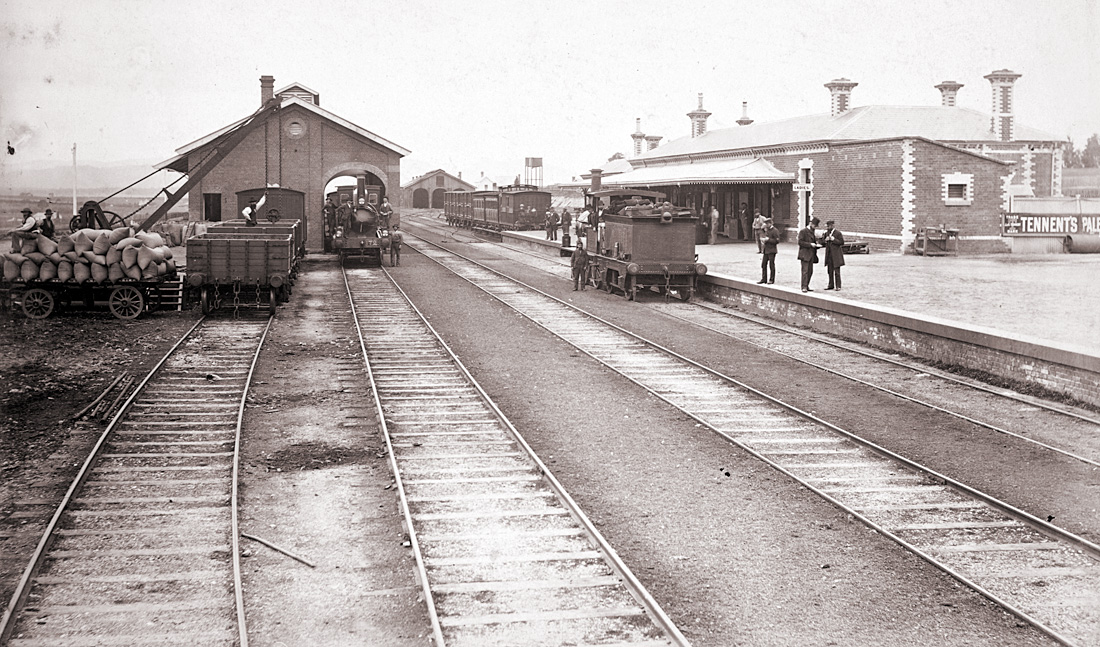
ABOVE: Looking East, circa 1880, probably as built. Prior to the first expansion of the yard. Note the lack of air brakes on any of the rollingstock and the low level platform. The goods shed in this photo was moved by 1888.
BELOW, a close crop of the photo above Photo from State Library Victoria collection
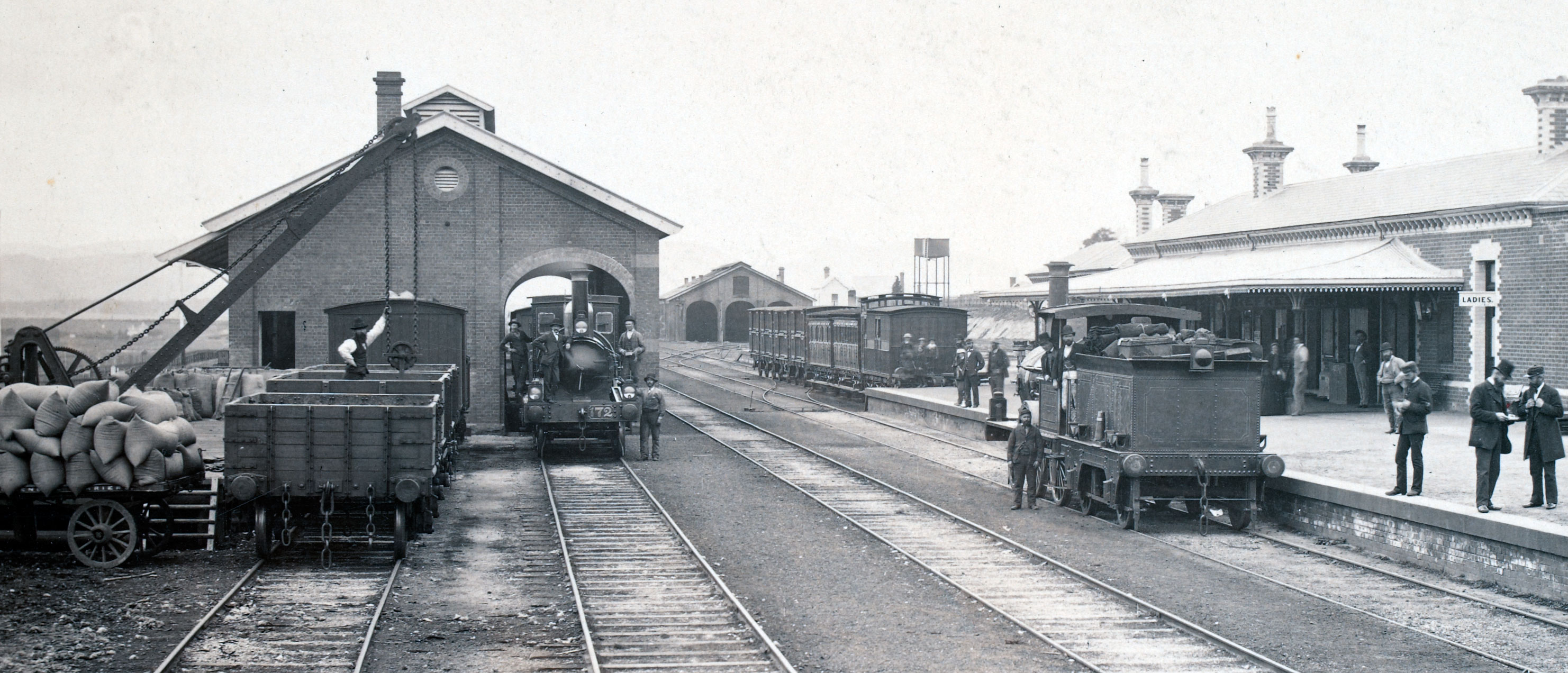
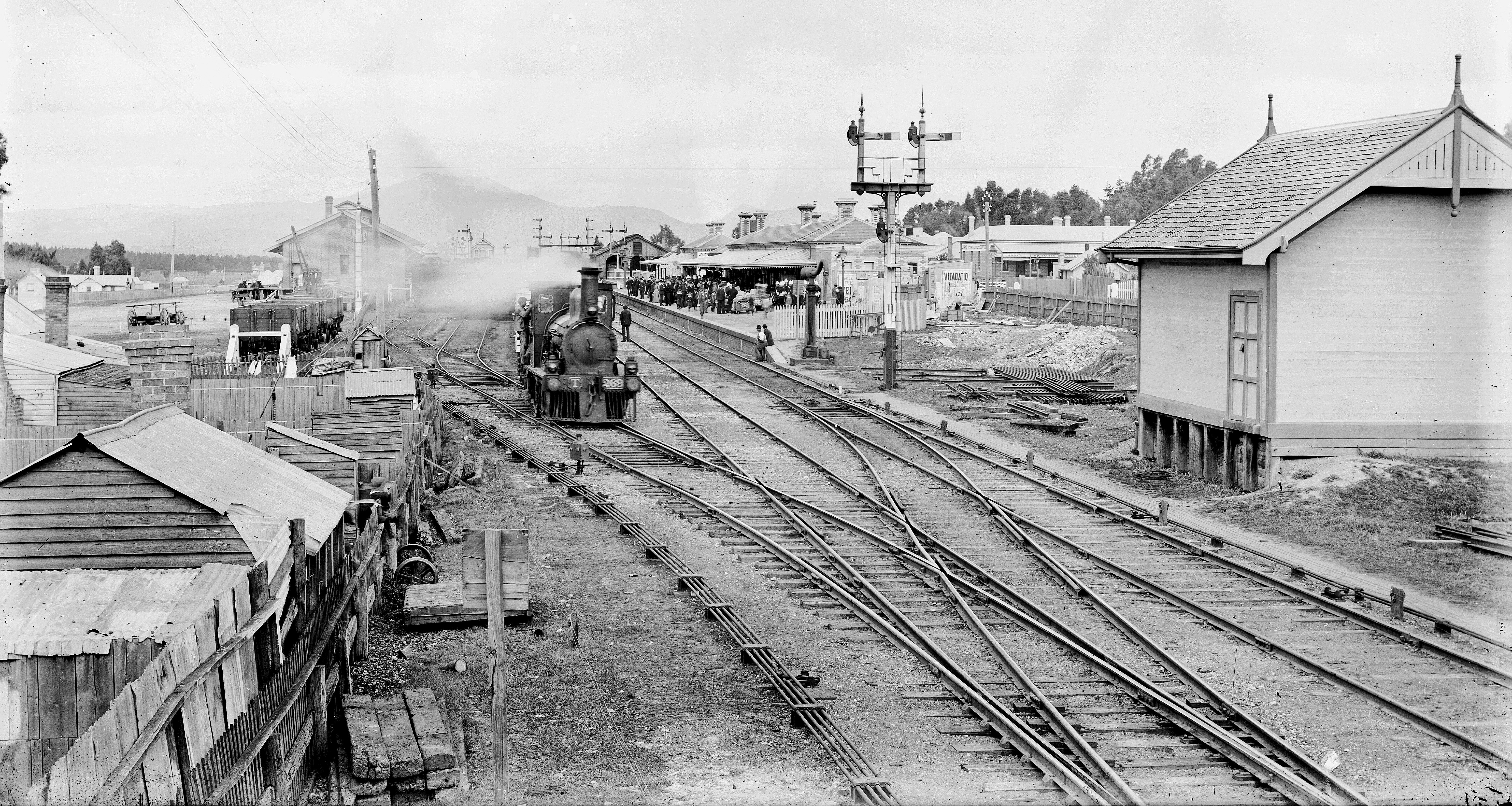
ABOVE: T 269 at Ararat, looking east, circa 1905, prior to the 2nd expansion of the yard.: T 269 at Ararat, looking east, circa 1905, prior to the 2nd expansion of the yard.
BELOW: From a similar spot to the photo above, the original goods shed and houses on the left are gone to make way for the expansion of the goods yard. The platform has also been extended and Ararat has now got a new and improved water crane. The dead end track on the left, with buffer, was known locally as "Rusty" I once enquired of an old Ararat signalman why it was called Rusty, not believing that anyone could ask such a dumb question about a track that was rarely used he replied, "There was a signalman that had a dog called Rusty and he got run over on that track"! circa 1924.
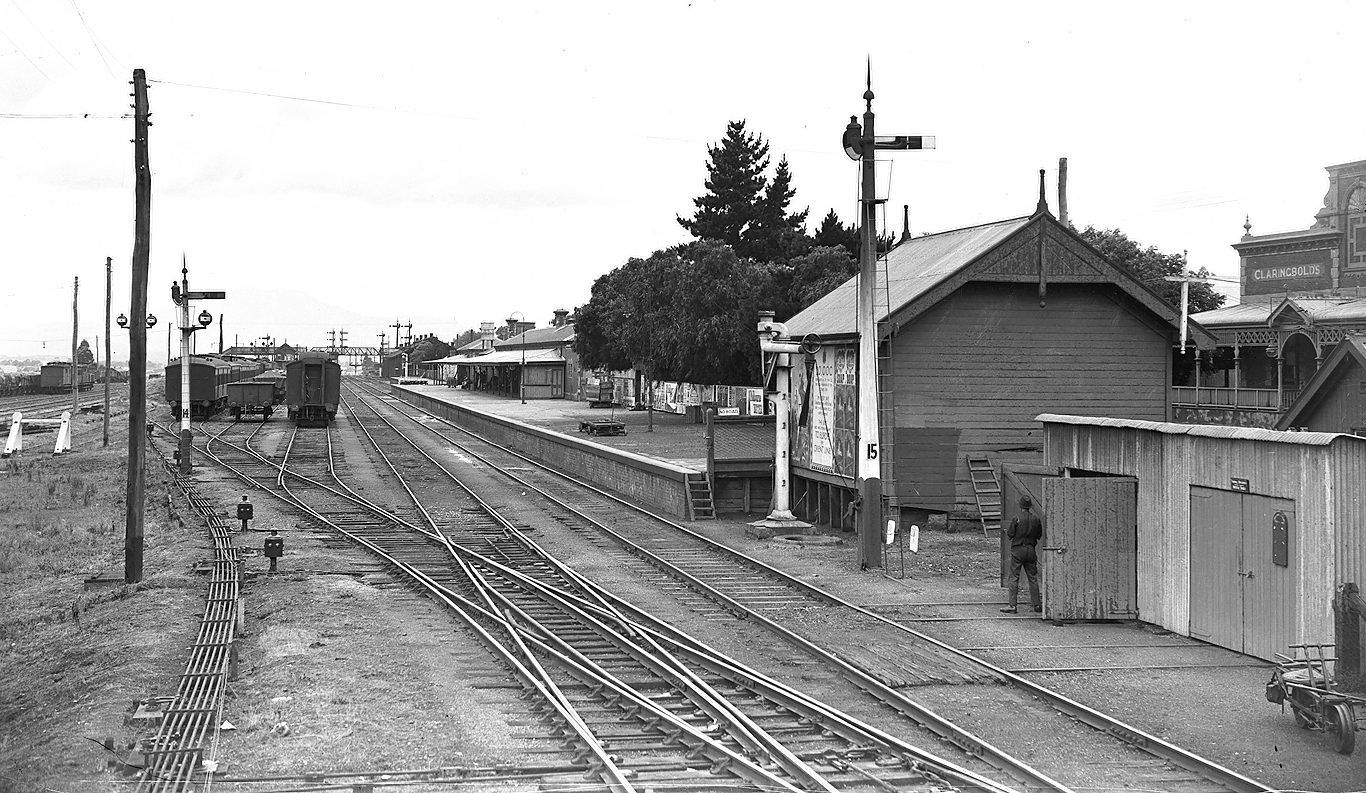
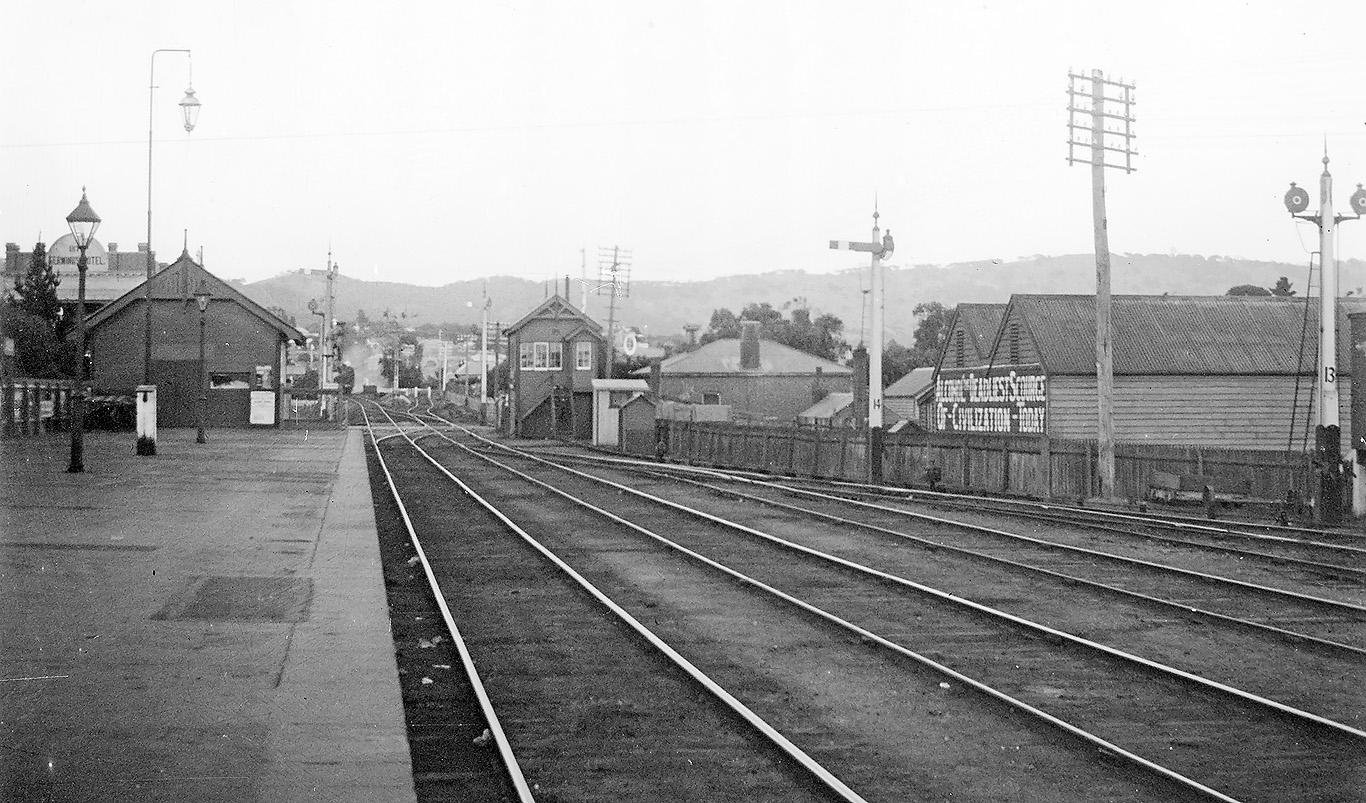
ABOVE: An early view looking west at B box. It appears that the Queen St interlocked gates are still in use prior to a pedestrian underpass being provided in 1915. This photo was taken just before the Ararat yard was enlarged, after which tracks would go behind B box. The building with the anti alcohol slogan "Alcohol the Deadliest Scourge of Civilization Today" would soon be demolished.
Photo courtesy State Library of Victoria collection
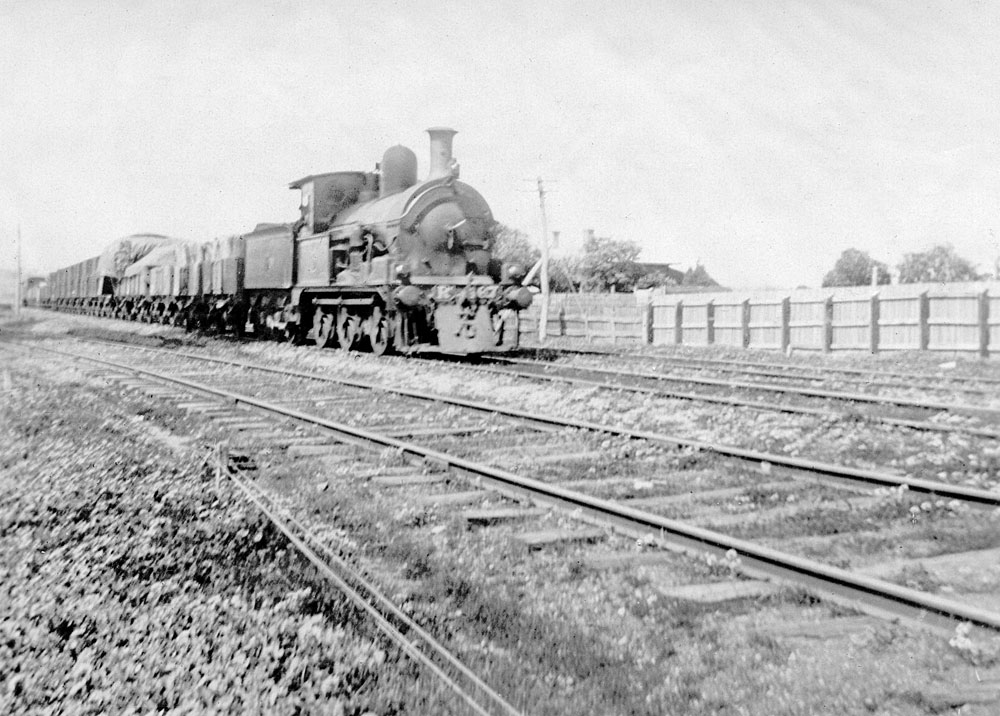
ABOVE: R class arrives Ararat from Ballarat, date unknown. circa early 1900's
Photo courtesy J. C. M. Rolland
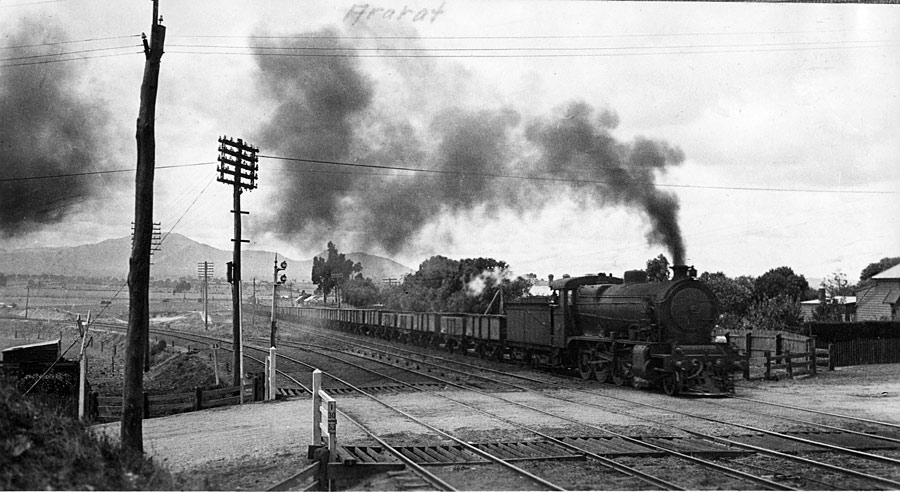
ABOVE: C 6 arrives Ararat off the Maroona line, the level crossing in the foreground was Albert Street. This crossing was replaced by an underpass in 1926 so the photo was taken in the early 1920's
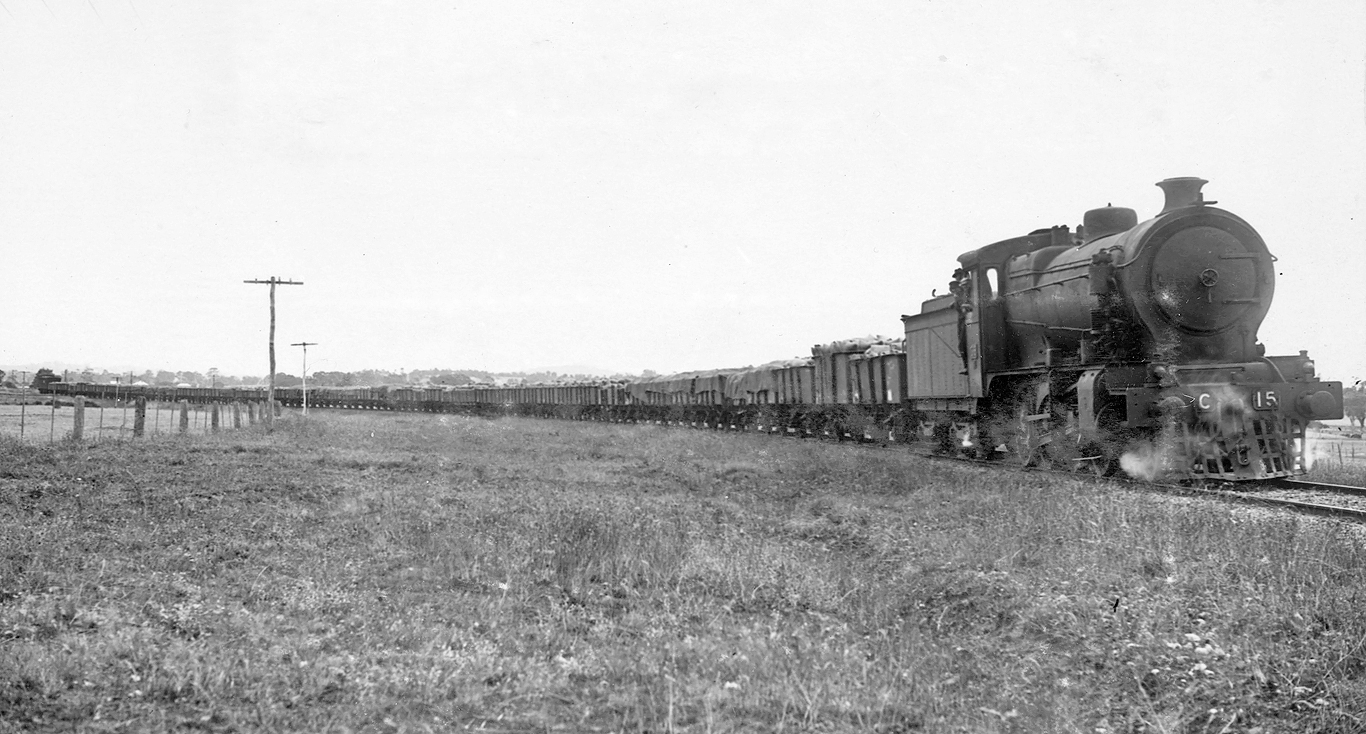
ABOVE: C 15 swings around the long curve out of Ararat as it heads towards Maroona with a lengthy bagged wheat rain most likely destined for Geelong. circa 1930. (photo from SLV collection)
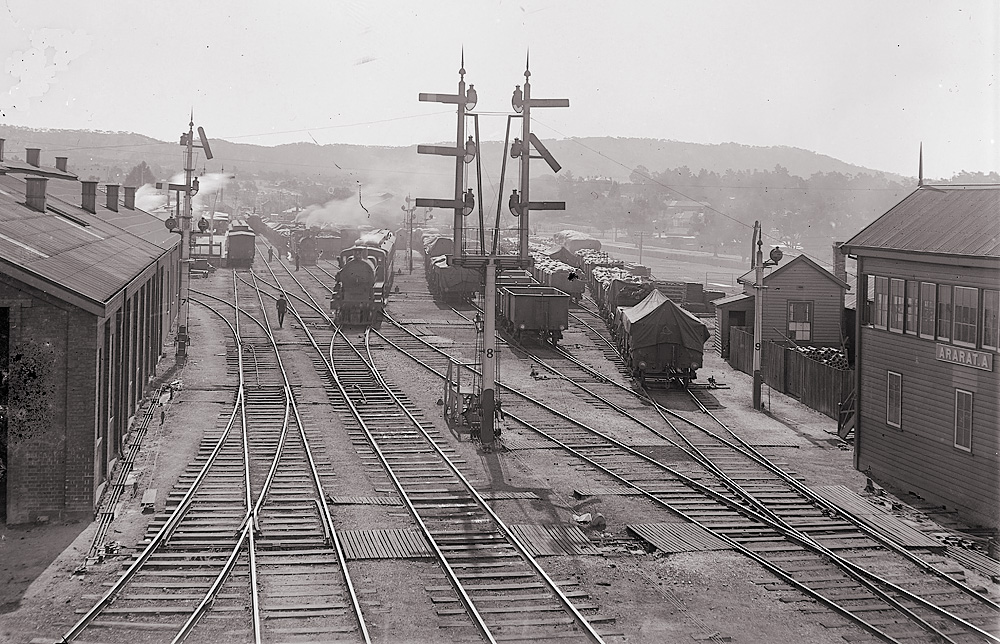
ABOVE & BELOW: These two photos were taken on the same day and show a very busy Ararat in about 1910.The A2 appears to be shunting some passenger cars off the passenger train in the platform. State Library of Victoria collection
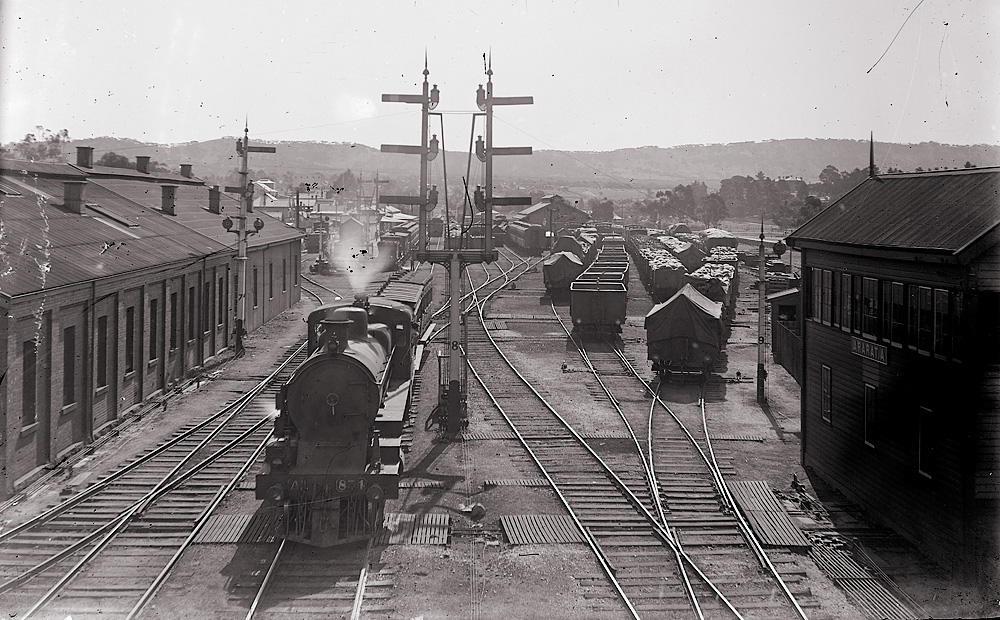
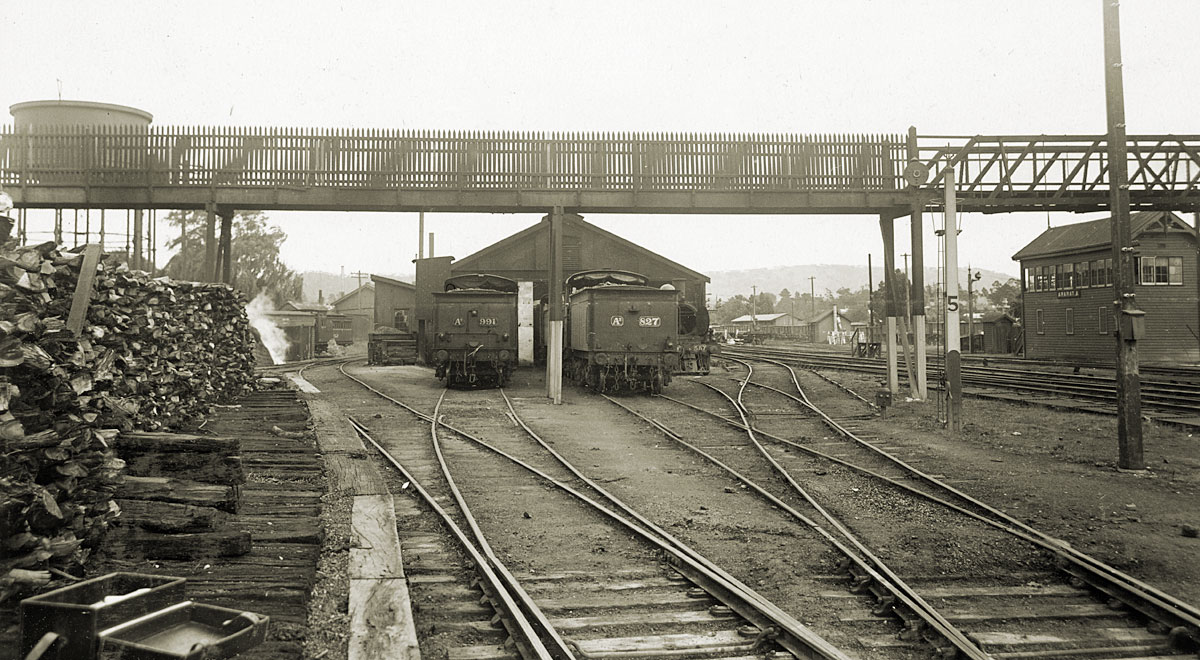
ABOVE: A view of the original Ararat locomotive depot which was moved to its later location in 1920. Photo courtesy State Library of Victoria collection
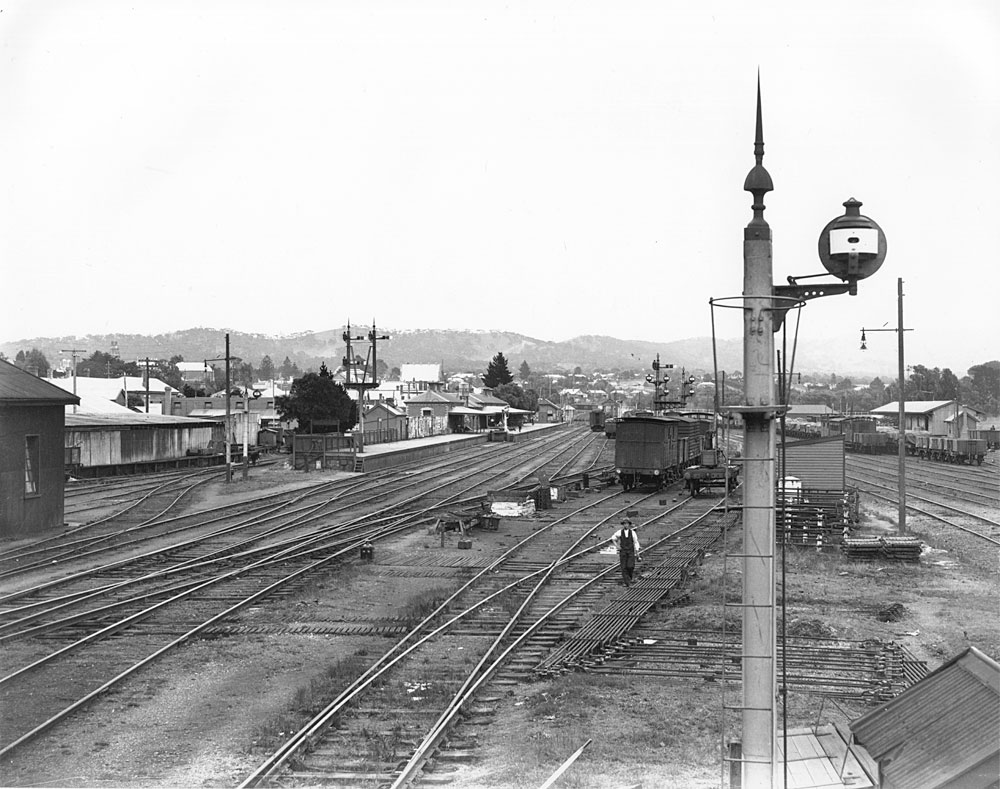
ABOVE: Ararat yard looking west from A box, photo prior to 1925. Of particular interest are the staggered arrival/departure platforms.
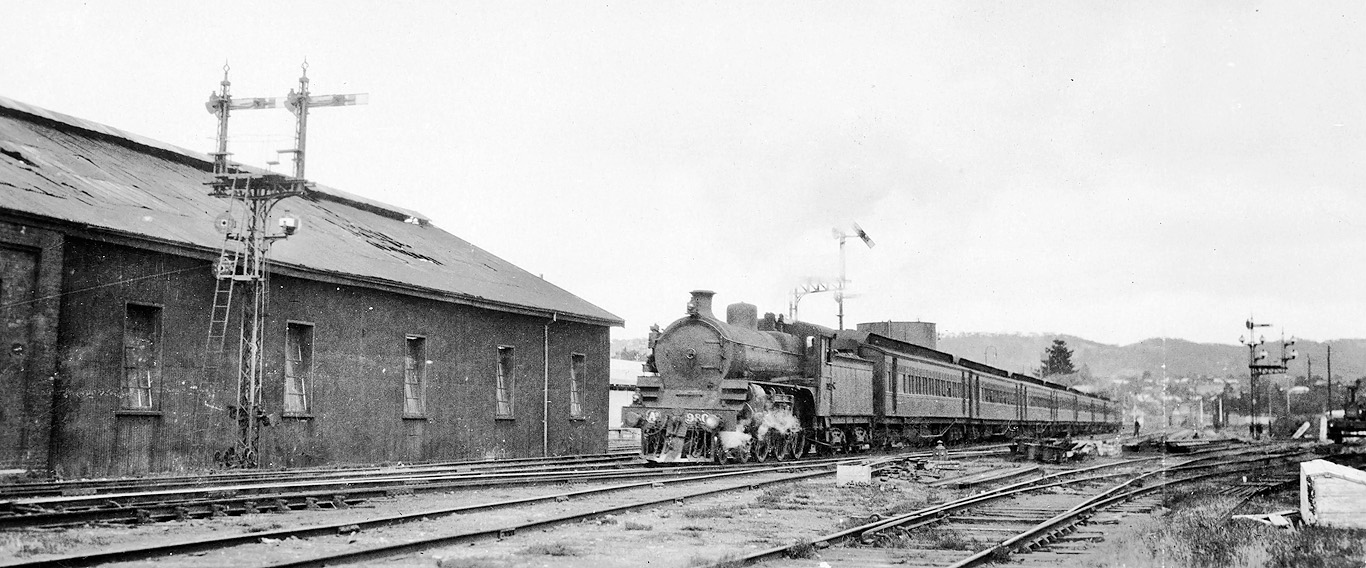
ABOVE: A 980 passes the original loco shed as it departs Ararat on the up Overland, Dec 17 1928. (photo courtesy State Library of Victoria)
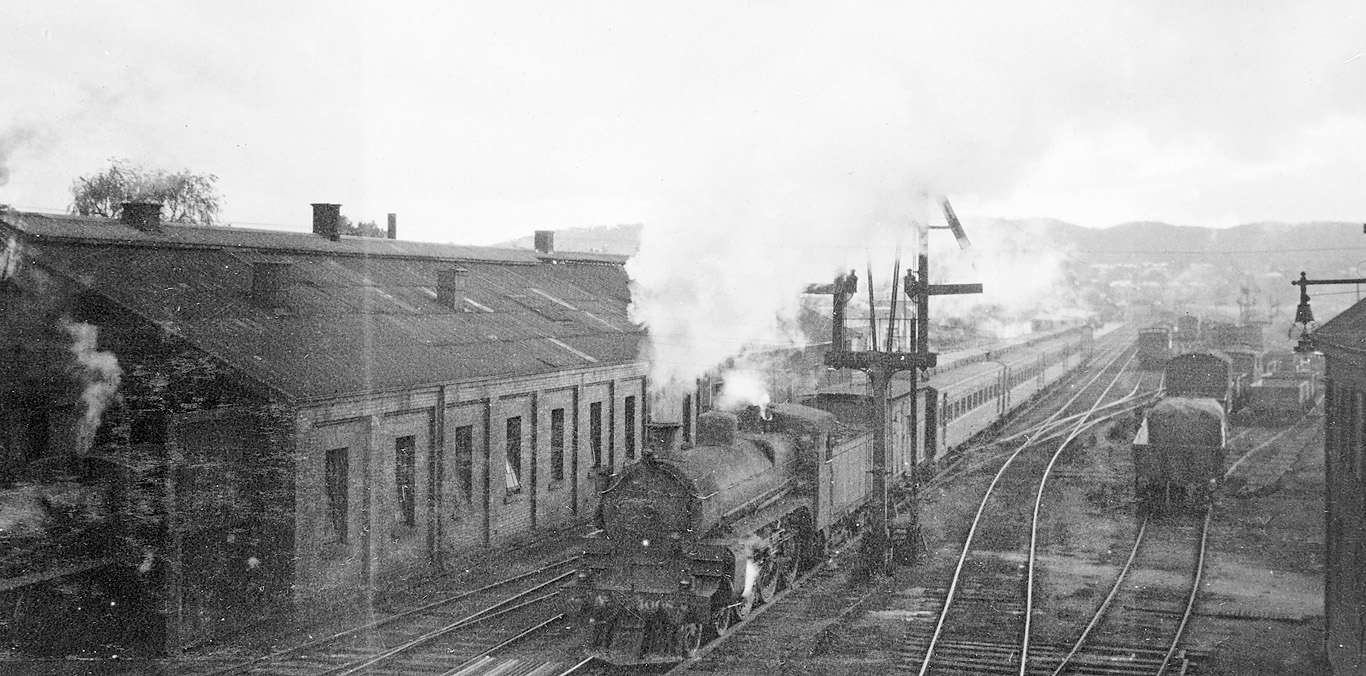
ABOVE A2 1008 departs Ararat on the up Overland, this photo is undated but I suspect it is from about the same time as the photo above it, 1928. The first vehicle behind the loco could be a horsebox or a hearse wagon. (photo courtesy State Library of Victoria)
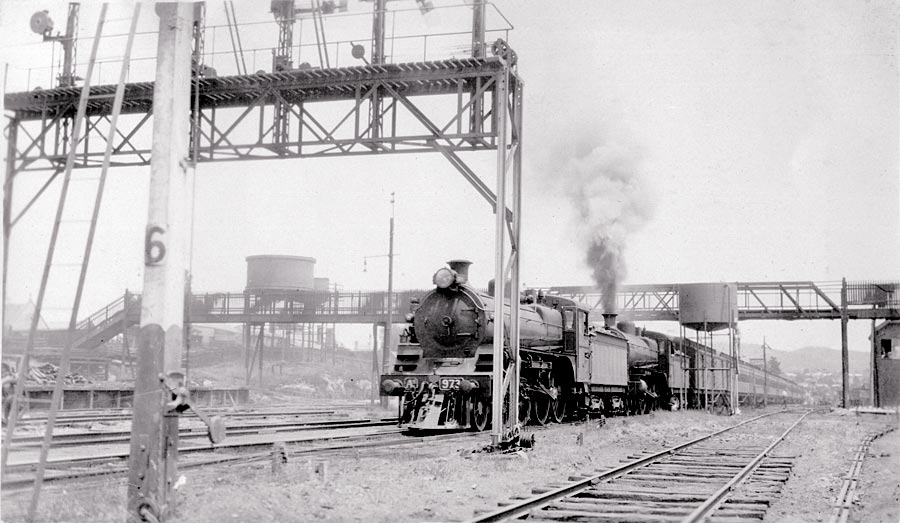
ABOVE: A pair of A2's depart Ararat on the up Overland, circa 1930
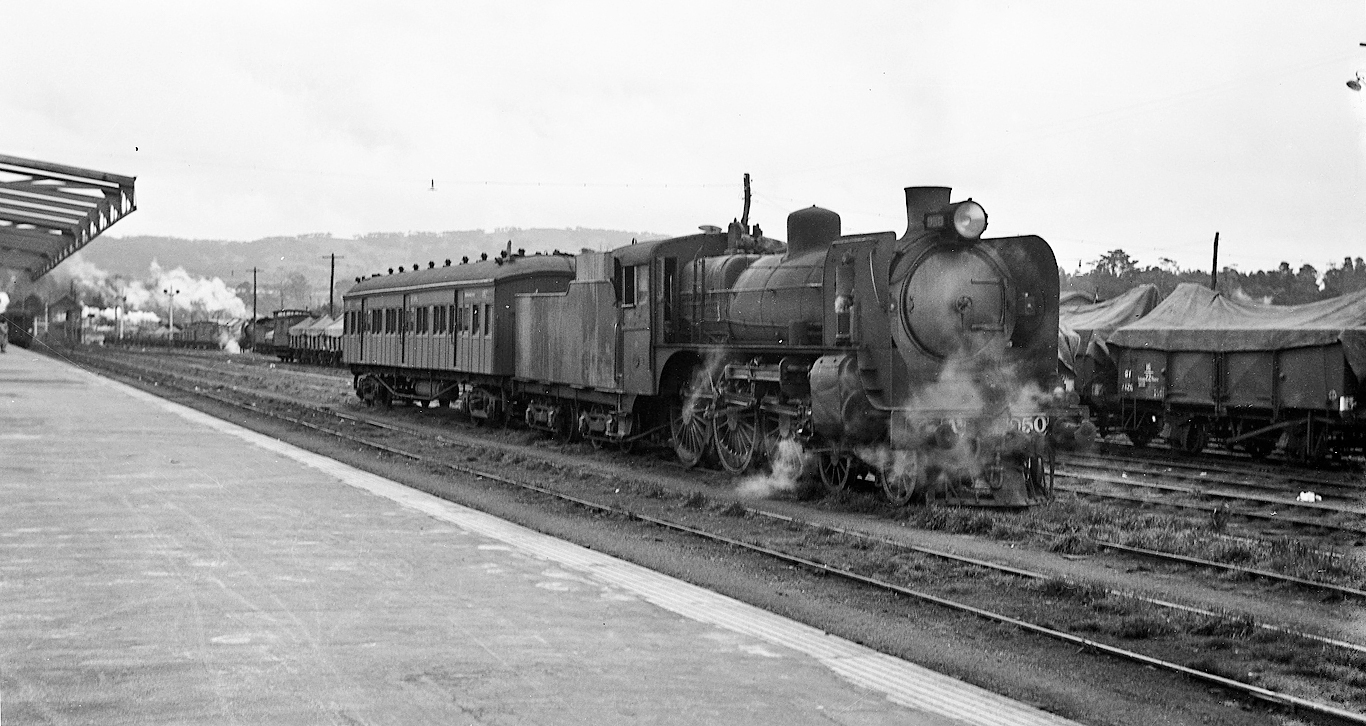
ABOVE: A2 950 and a PL car, B box can be seen on the extreme left, circa 1947. (photo courtesy Brian McClure)
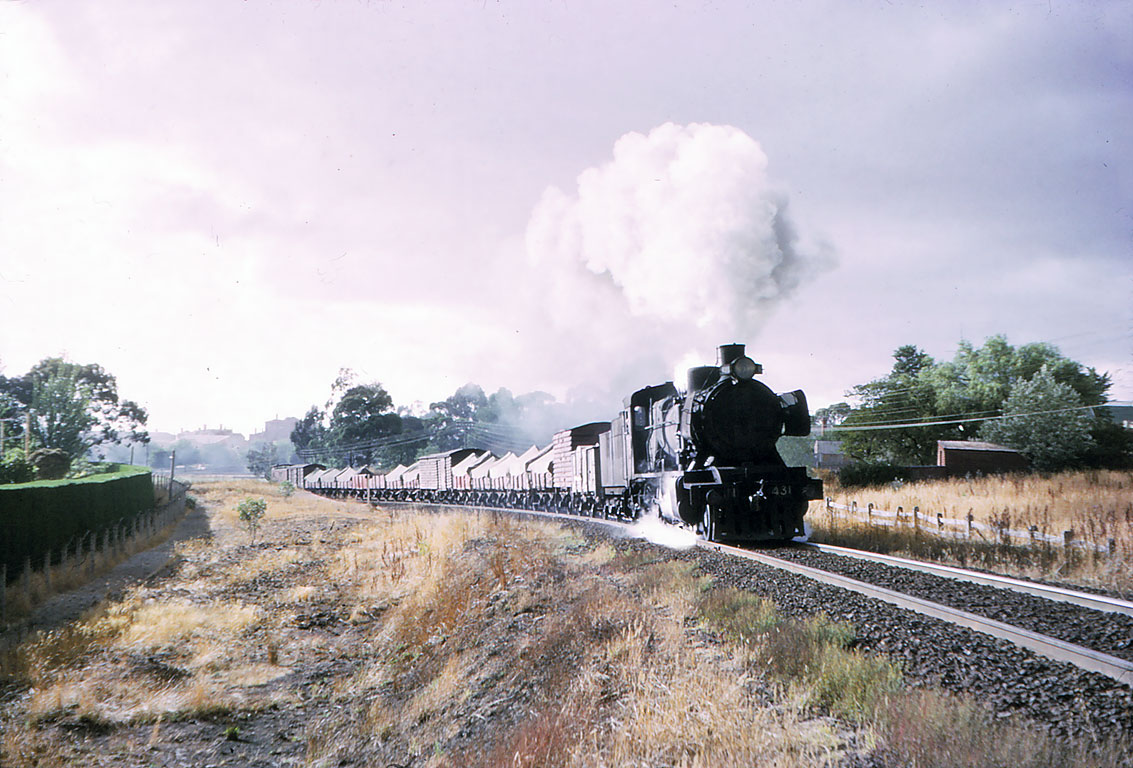
ABOVE: N 431 departs Ararat on a down goods, Jan 9 1964. (photo courtesy Bob Wilson)
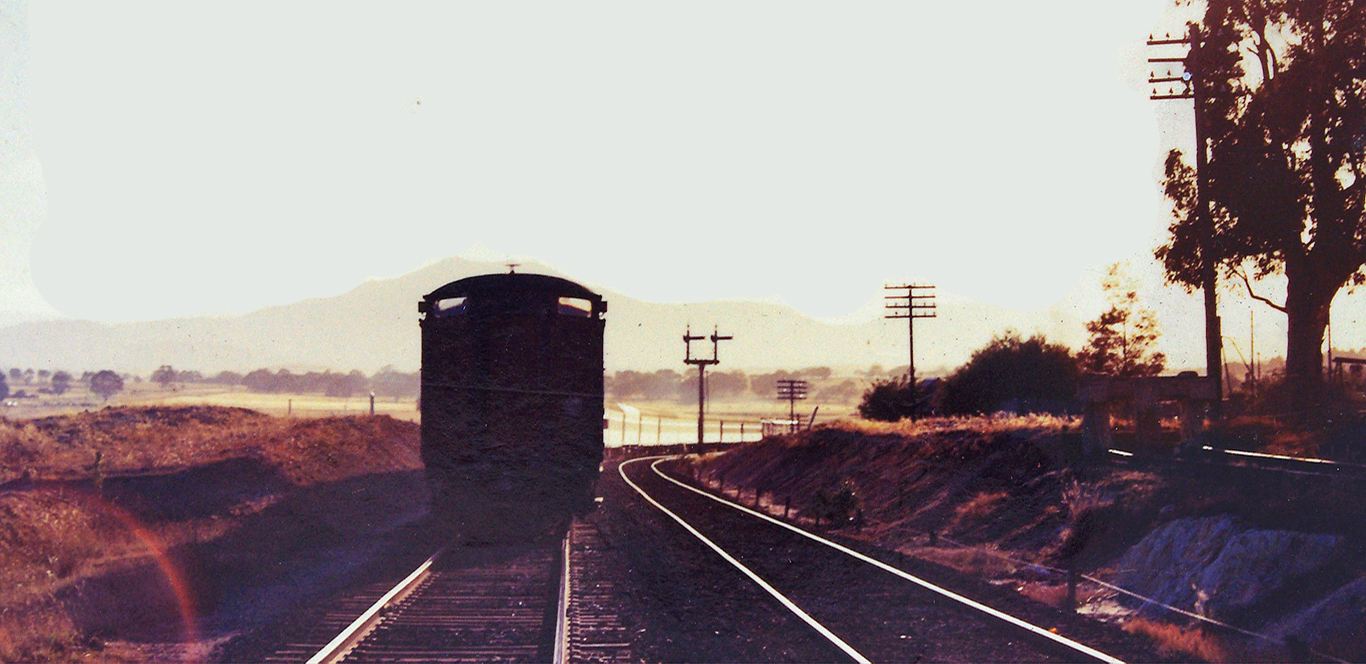
ABOVE: The up Overland departs Ararat in a railway publicity department photo. This photo appeared on the cover of the Jan 1970 VR newsletter.
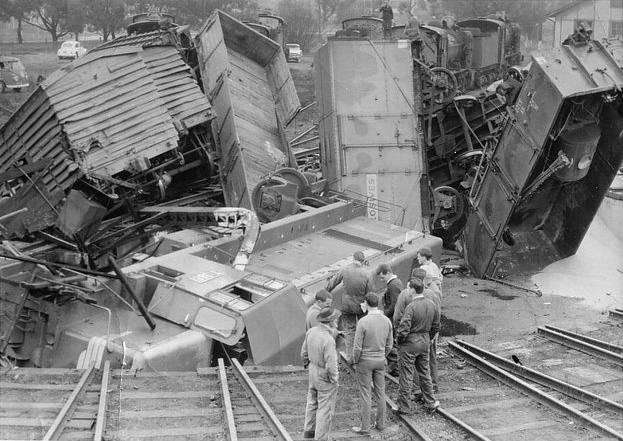
Many thanks to all who responded to this "where is it" It is definately Ararat and is possibly a photo by The Ararat Advertiser newspaper. August 8 1967. Ararat loco had catch points for movements in both directions and it is suggested that the ones going down the hill were provided after this mess, caused by not having the air through on a long rake that was being shunted.
BELOW: Ross Gorman sent me these great colour shots of the carnage.
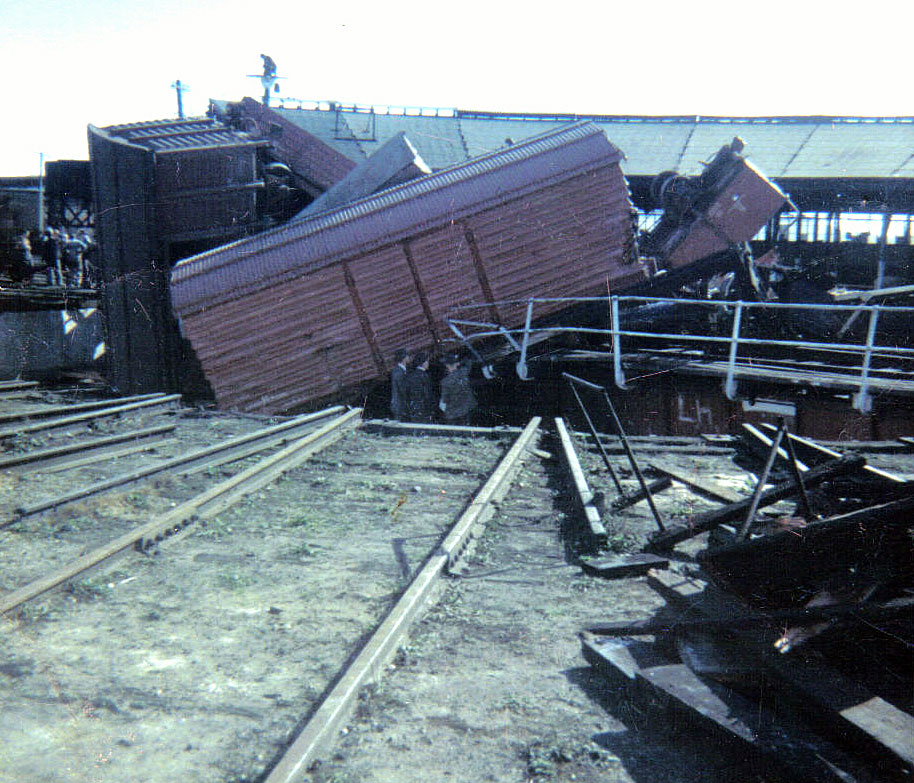
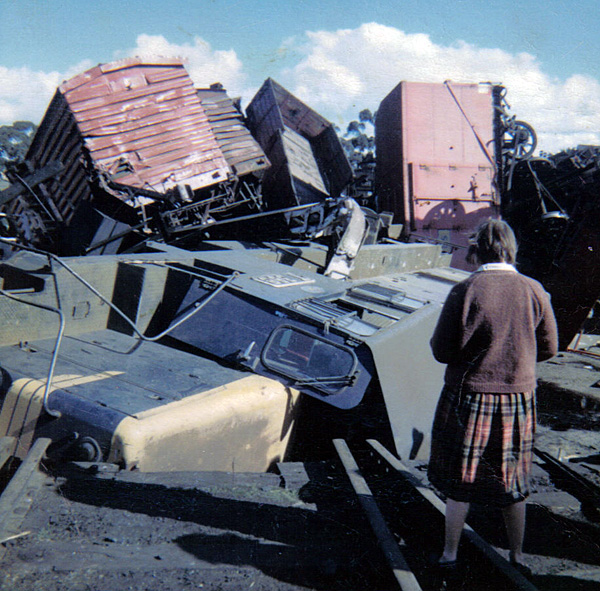
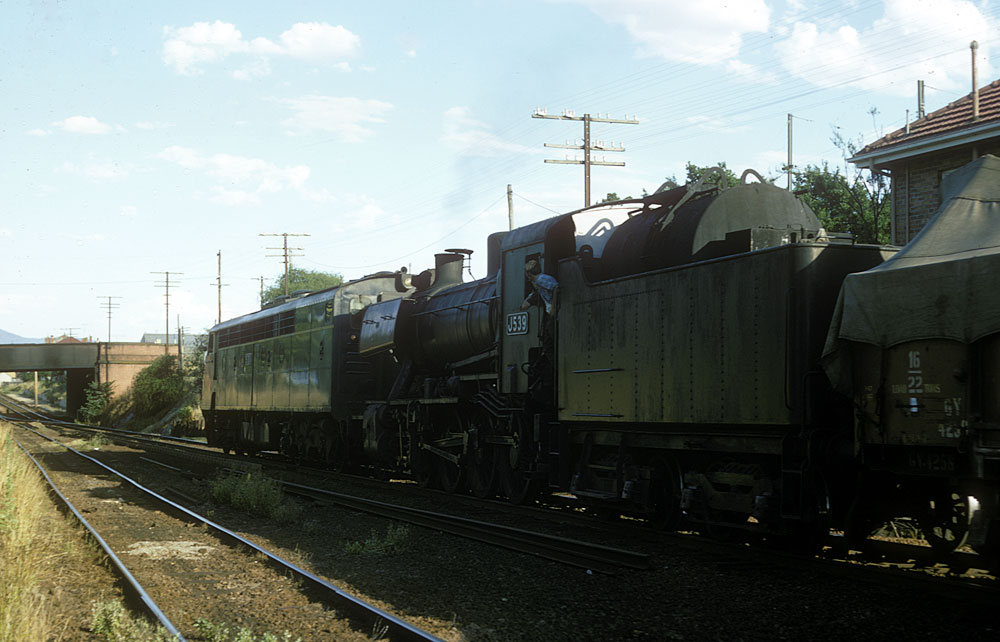
ABOVE: J 539 had been working as the Stawell banker and is seen above hitching a ride behind S 311 back to Ararat for servicing,
BELOW: we see it heading down to Ararat loco.
Jan 7 1971.
Photos courtesy Tony Smith
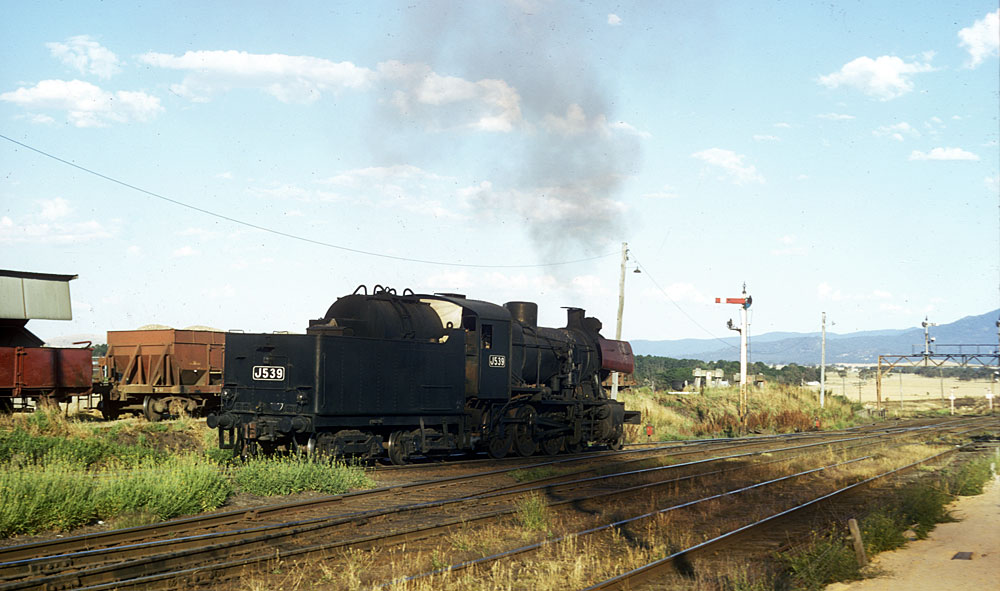
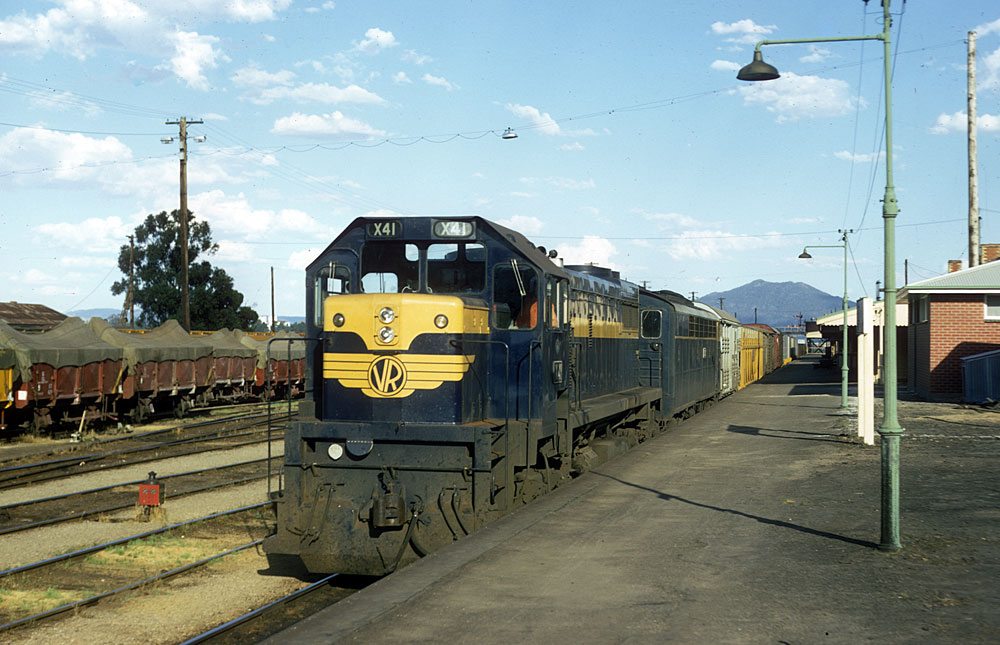
ABOVE: 6 month old X 41 and S 307 head a Serviceton bound "jet" at Ararat. Jan 6 1971. Photo courtesy Tony Smith
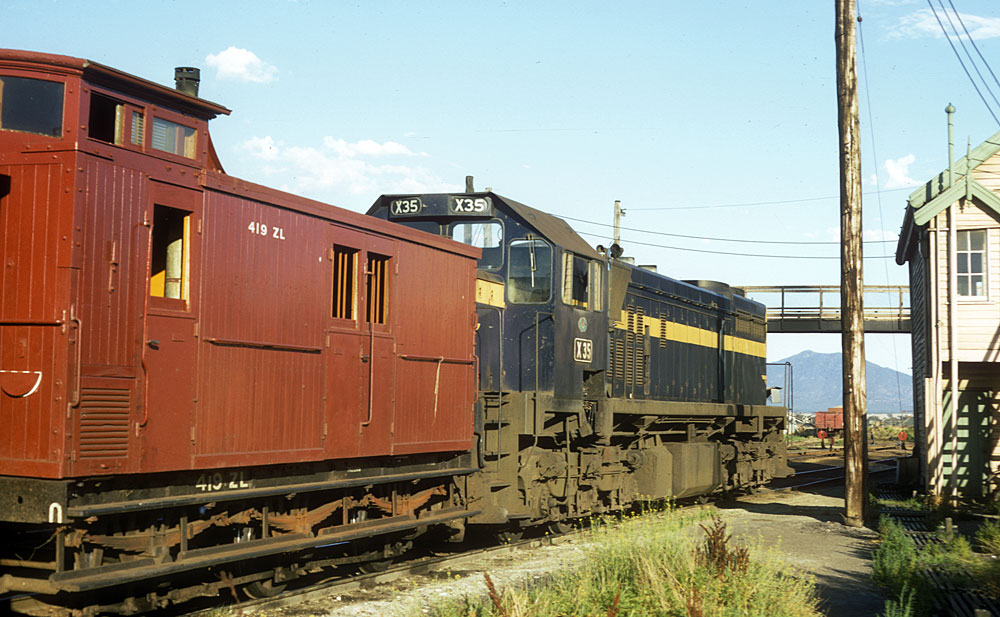
ABOVE: X 35 and a ZL hide behind Ararat A signalbox
Jan 6 1971.
Photo courtesy Tony Smith
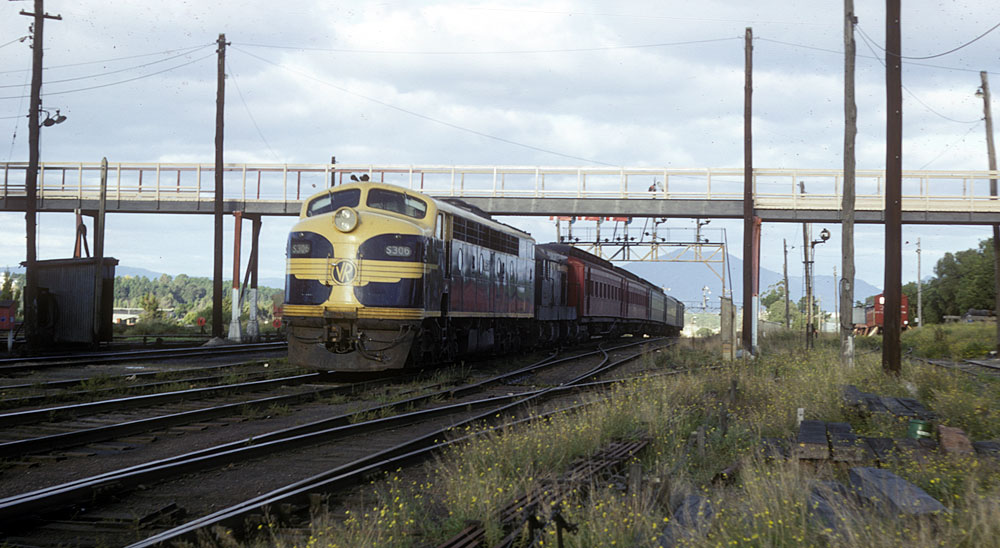
ABOVE: S 306 and T 342 arrive Ararat on the afternoon down pass.
March 30 1970 (photo courtesy Tony Smith)
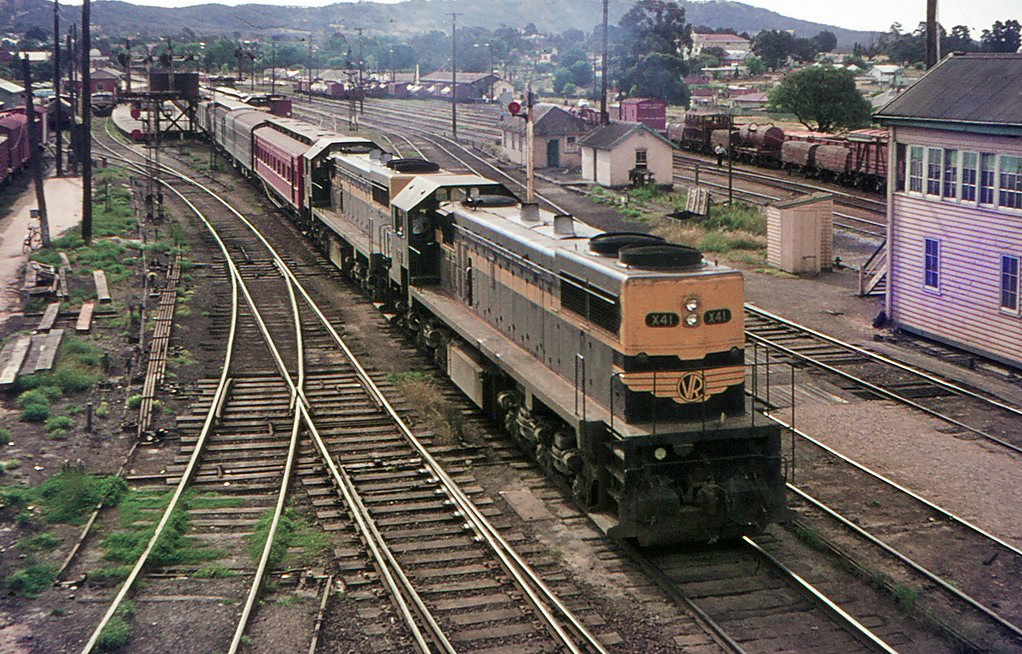
ABOVE: A pair of X class depart Ararat on an up pass, 1971. (photo courtesy Bob Wilson)
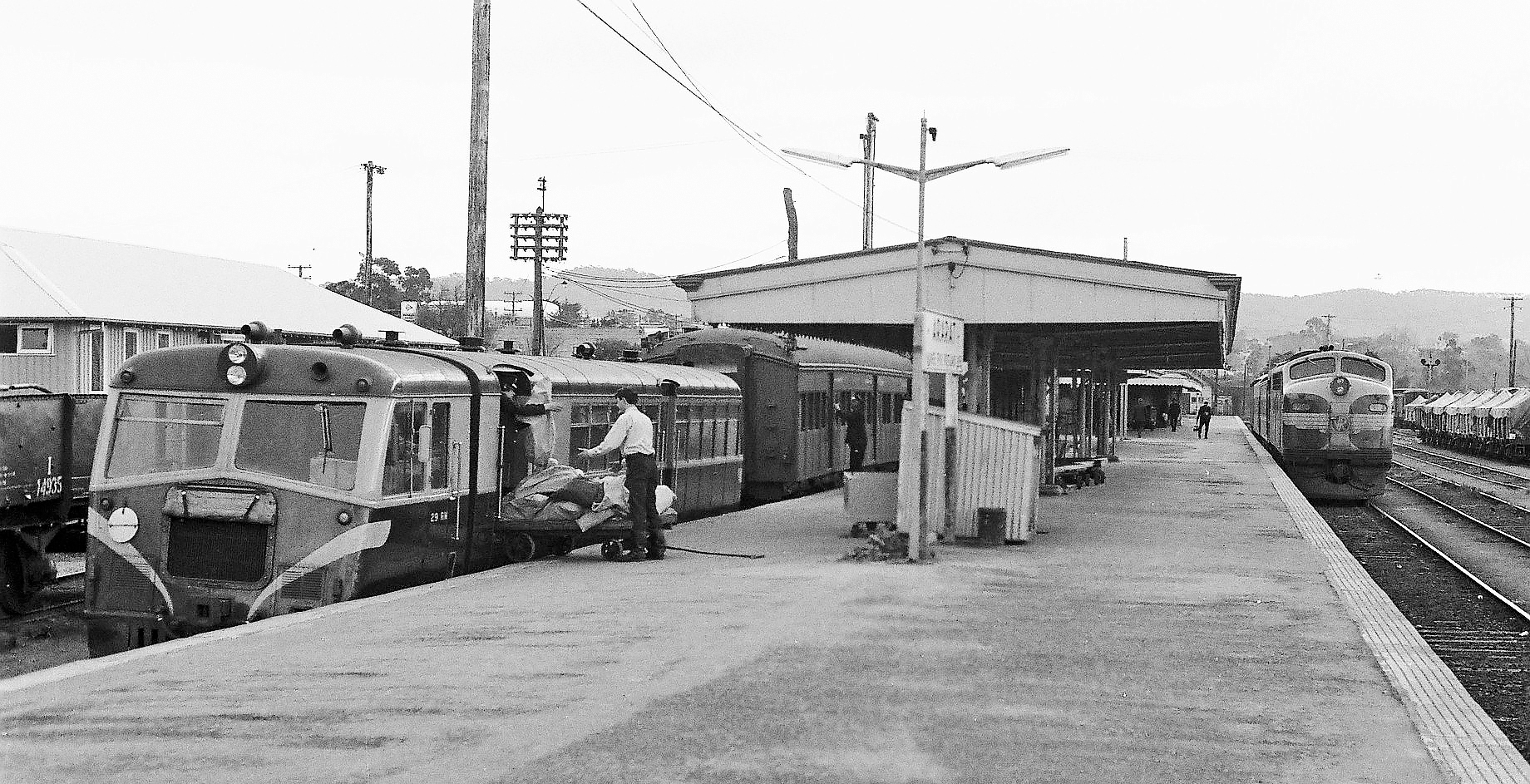
ABOVE: Having just arrived from Hamilton the Walker unloads parcels in the Portland dock whilst S 305 awaits its departure time on the afternoon up Dimboola pass to Melbourne, July 22 1972. The following Monday the morning down pass began terminating at Horsham to form the afternoon up service. photo courtesy David Langley.
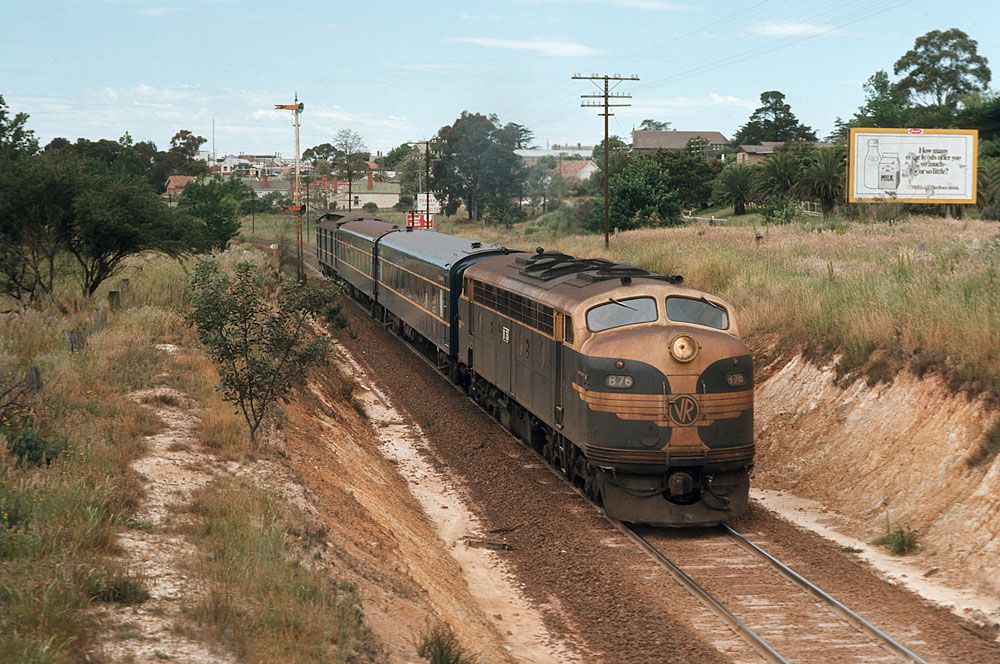
ABOVE: B 76 climbs the hill out of Ararat past the up co-acting distant signal on the Spencer St to Horsham pass. in broad gauge days. 1974.
(photo courtesy Trevor Penn)
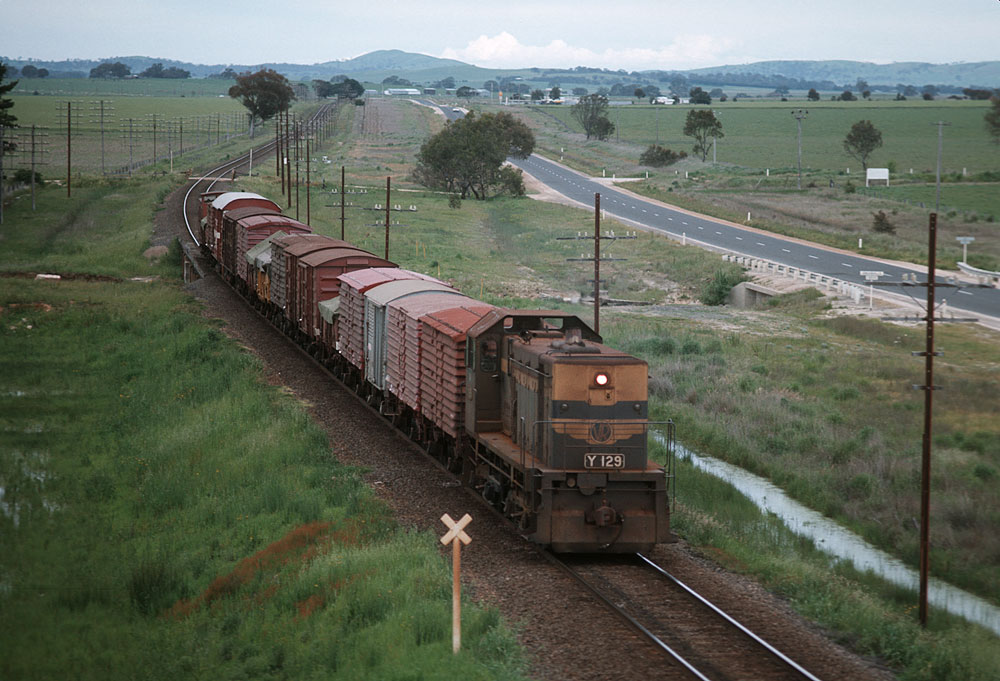
ABOVE: A short goods from Ballarat on the outskirts of Ararat, 1975.
Photo courtesy Trevor Penn
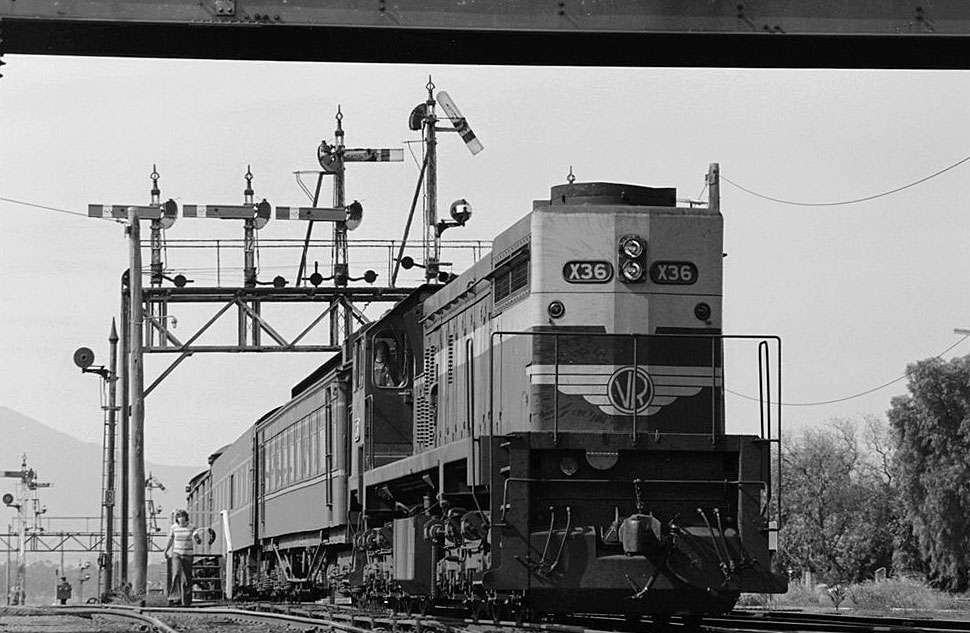
ABOVE: X 36 arrives Ararat on the 8.30am Spencer St to Horsham pass. May 1978.
The signalman can be seen walking back to the signalbox after receiving the staff from the fireman.
BELOW: Taken just after the above photo we see the pass. sitting at the platform while the Ararat to Hamilton DRC
waits for the passengers off the pass. Ararat yard could often be almost devoid of activity during the daylight hours but come nightime, whilst Ararat slept, the yard was usually humming with activity.
Both photos courtesy Peter J. Vincent
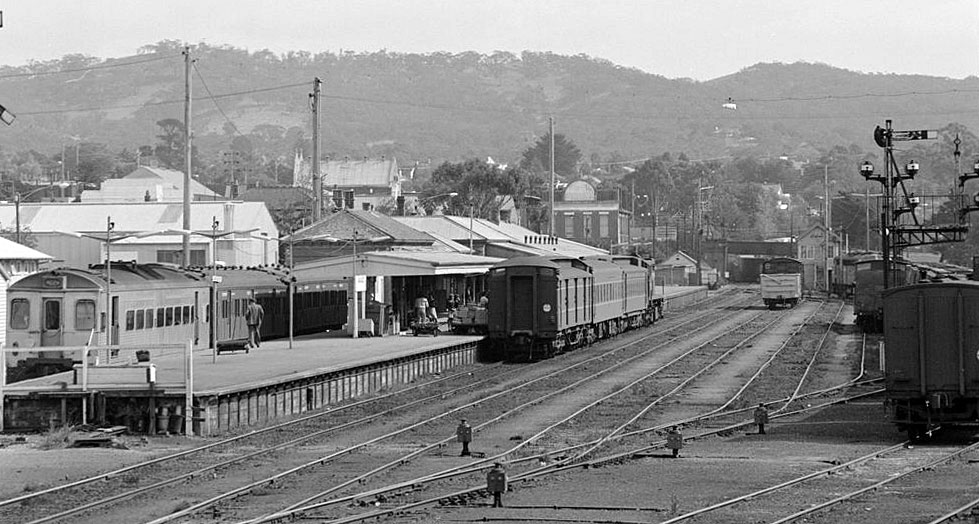
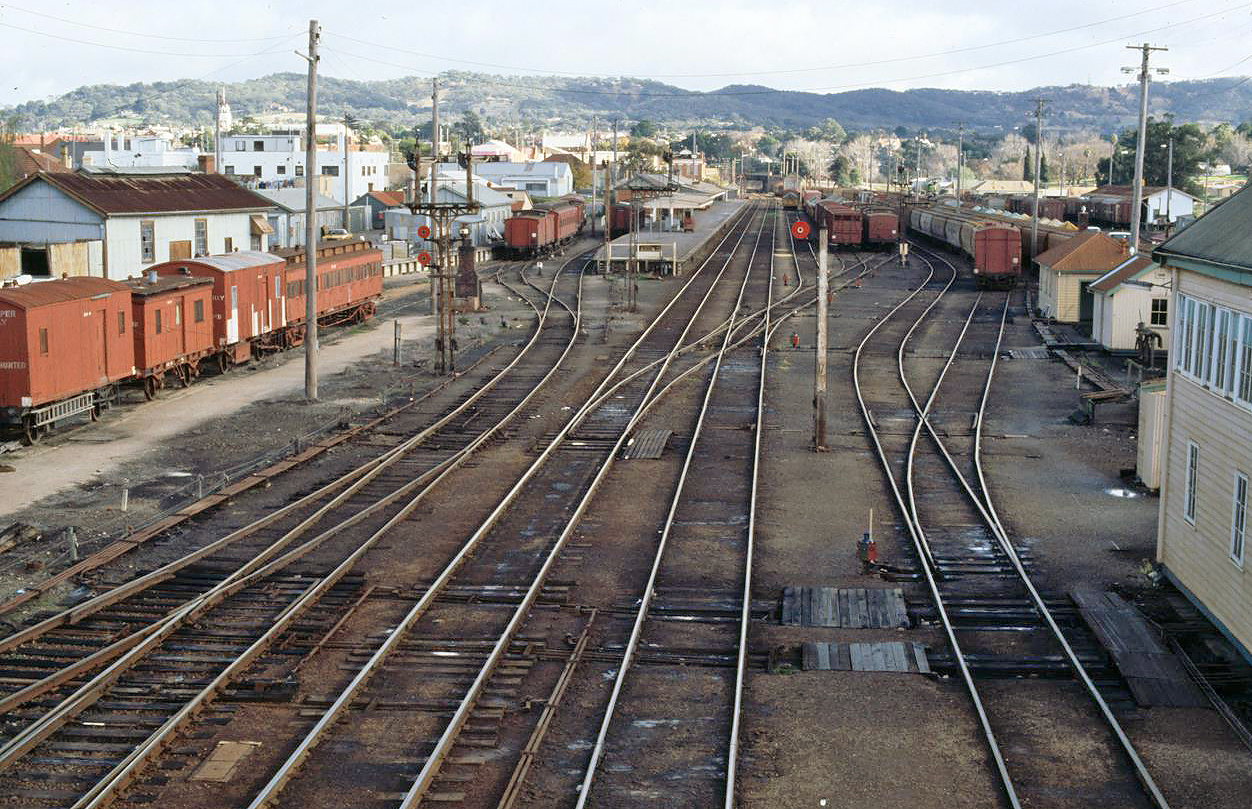
ABOVE: Ararat from the footbridge, looking west, circa 1981 (photographer unknown)
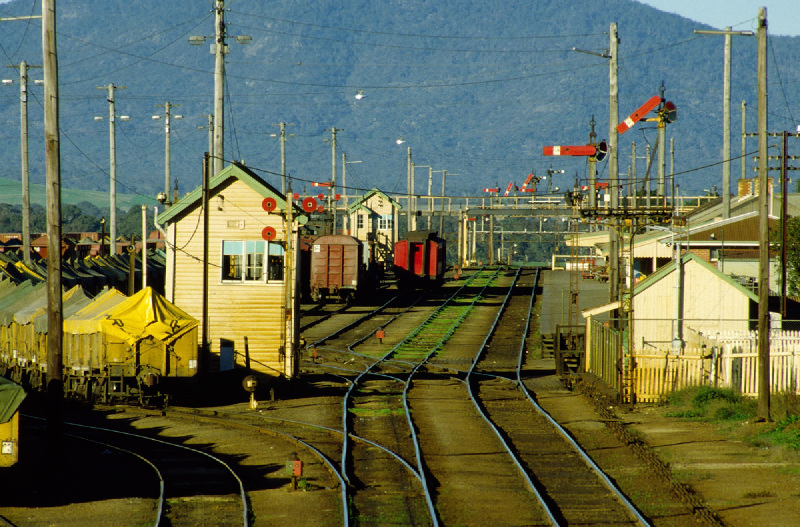
ABOVE: Looking east, towards Melbourne, clearly showing B and A box. circa 1975.
Photo courtesy Rod Williams.
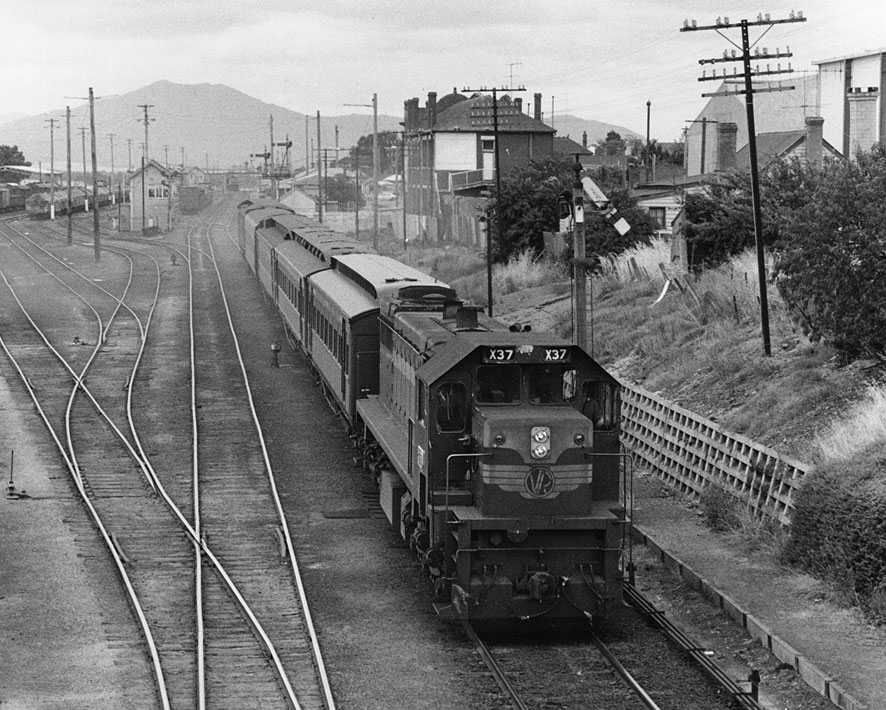
The ABOVE photo shows X 37 on the 8.30am Spencer St to Horsham pass. departing Ararat on News Years Day 1979. At the time Ararat was the largest crew depot outside of Melbourne, it had a 24 hour yard pilots due to its very busy yard, in every way it was the hub of the Western district.
The scene BELOW shows Ararat now, almost 30 years later. The broad gauge now ends at Ararat. The place is a shadow of its former self.
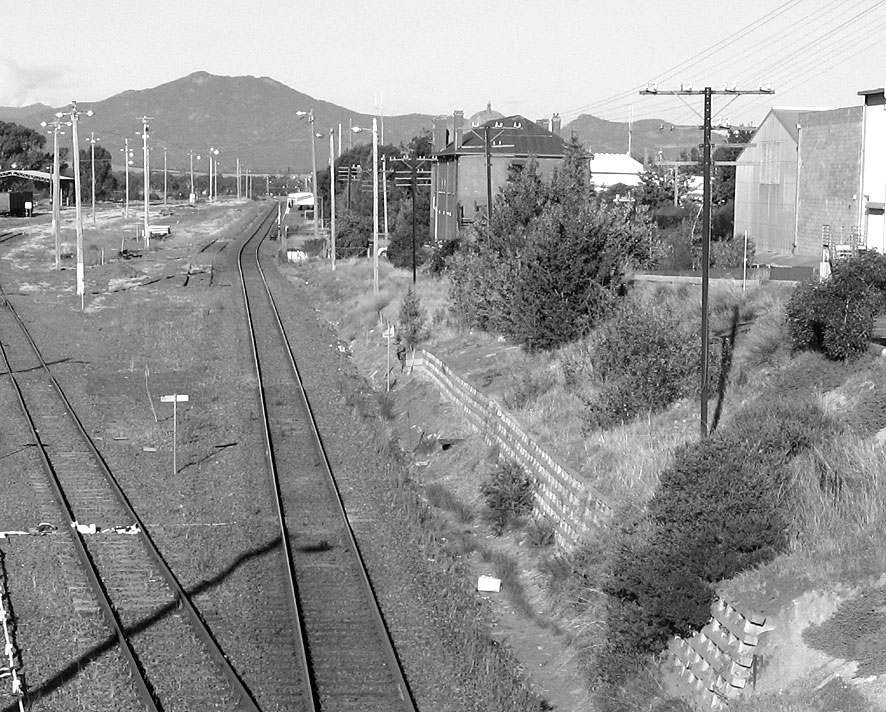
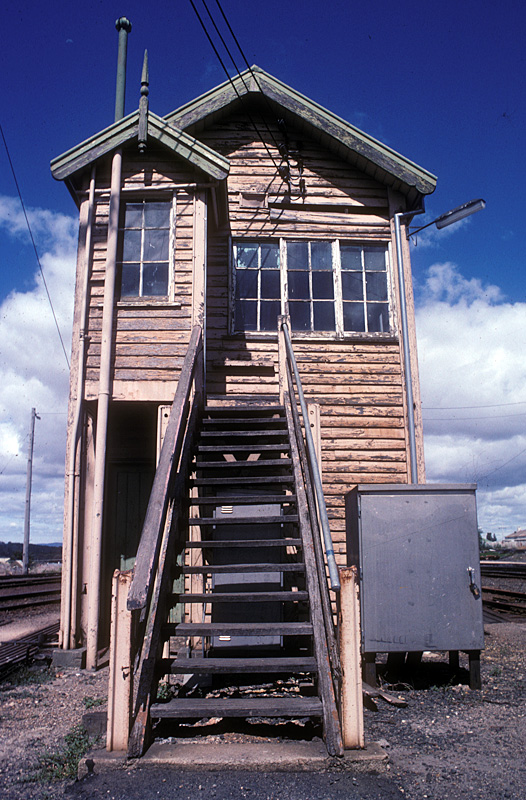
ABOVE: Western side of Ararat A box, 1988
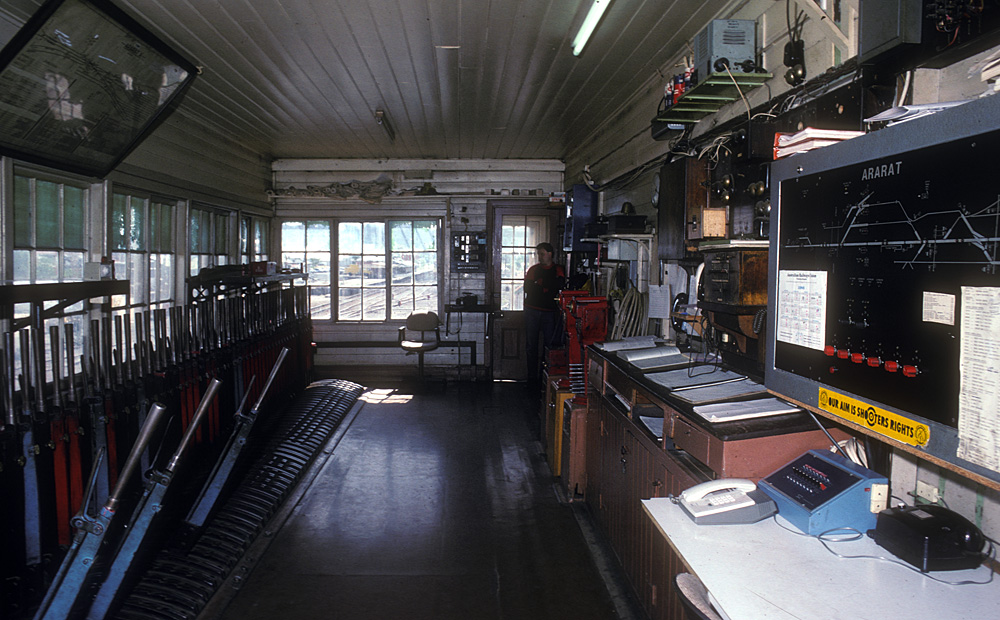
ABOVE: Interior of Ararat A box in 1988, by this time Ararat B had been demolished and the points at the Adelaide end of the yard were
controlled by Ararat A box by the panel seen on the right.
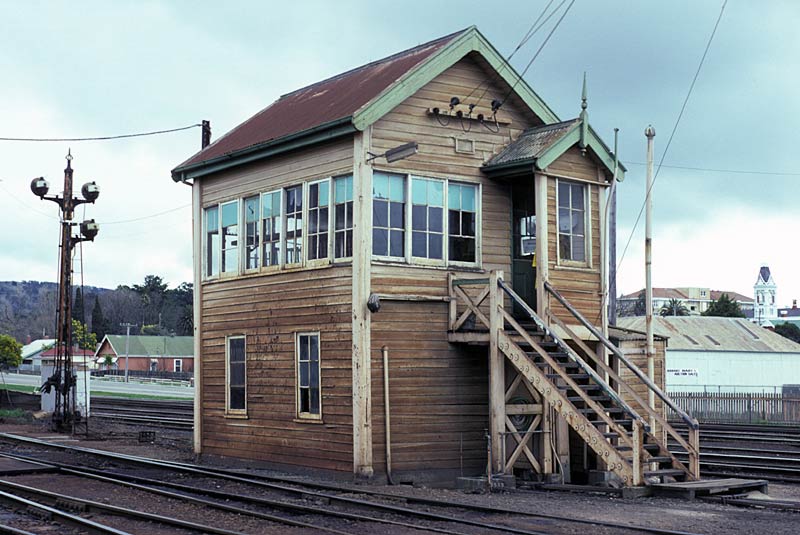
ABOVE: Ararat B box controlled all movements at the down end of Ararat yard. It was abolished in Nov. 1984 as a result of commissioning of Centralised Traffic control. Photo in 1982.
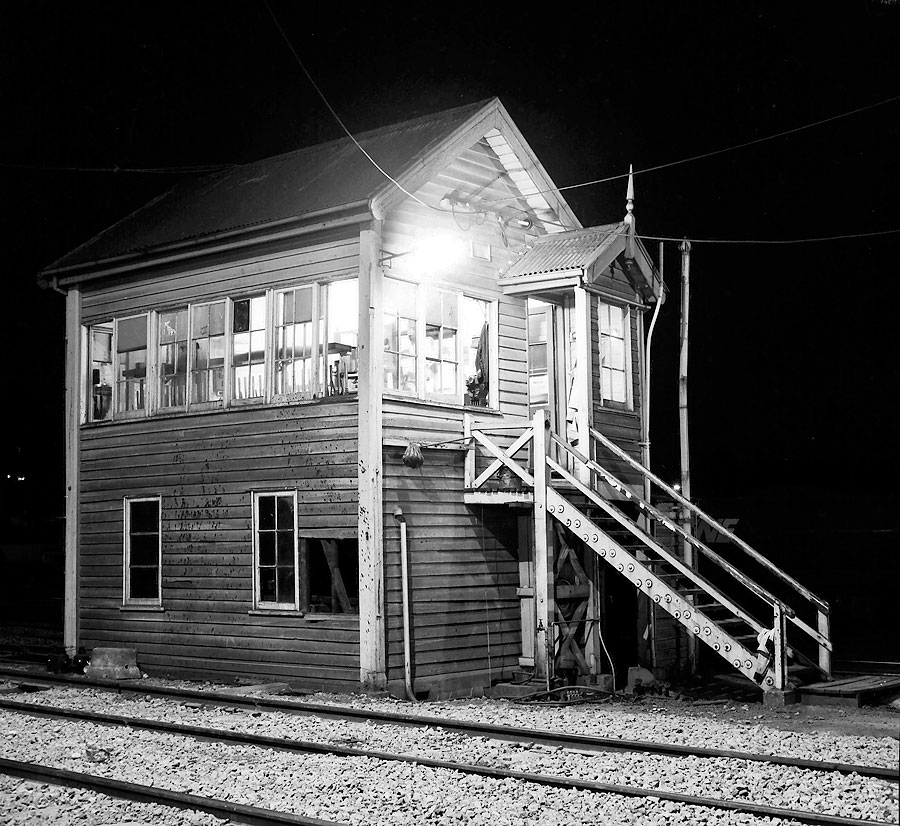
ABOVE: My main memory of B box is of it at night. This splendid time exposure by Chris Wurr was taken on Nov 8 1984.
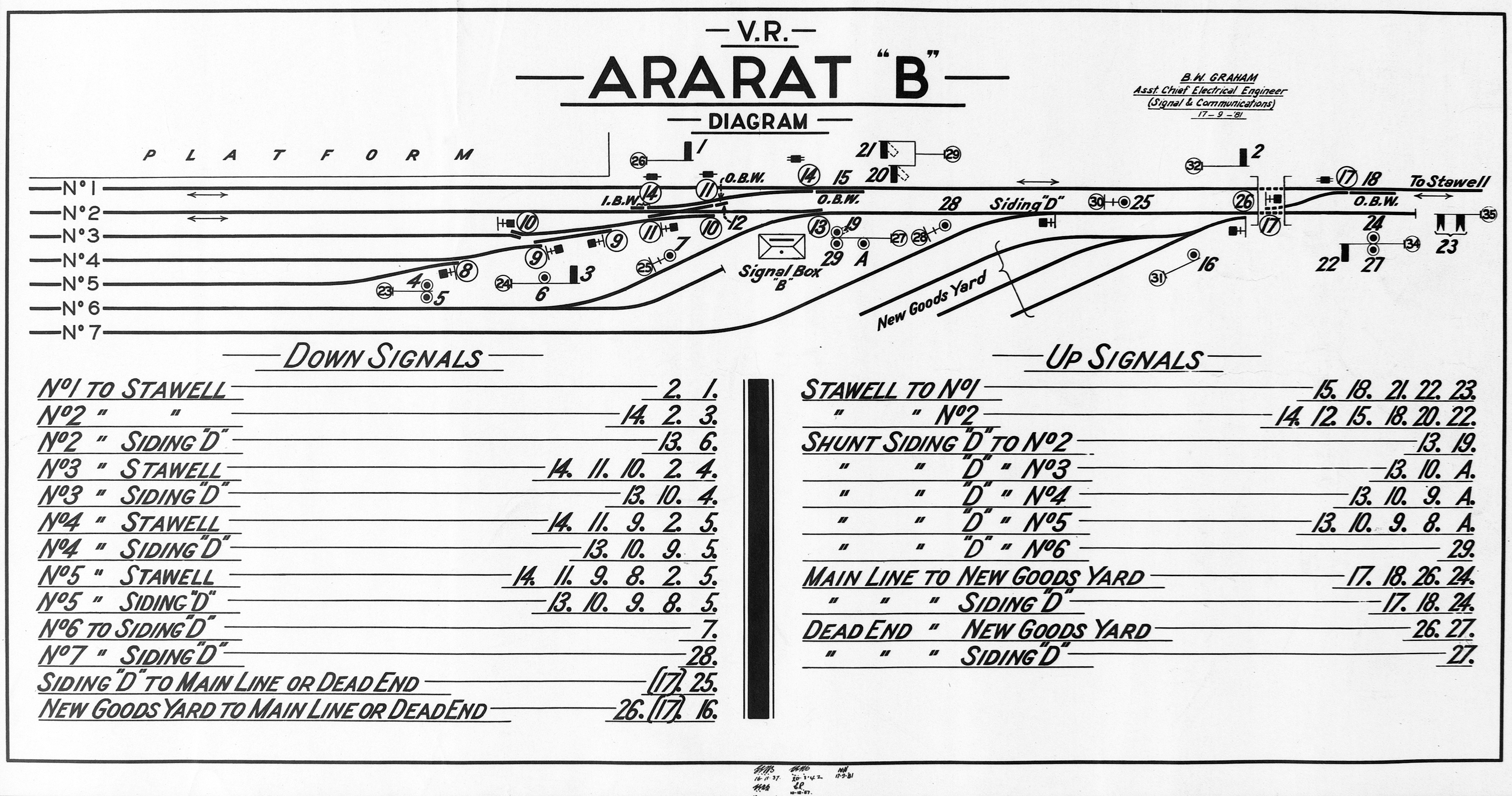
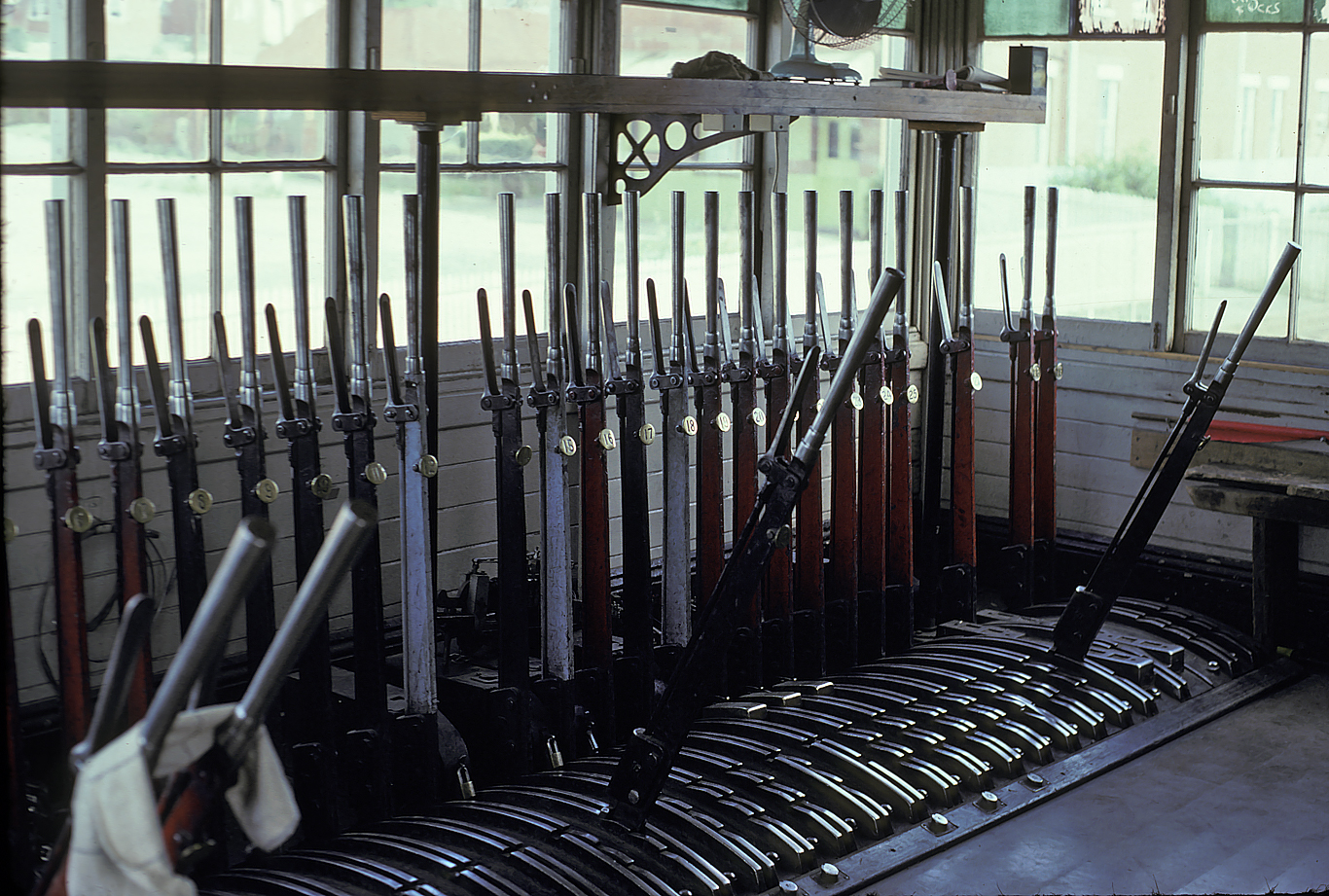
ABOVE: Internal view of Ararat B box showing the 30 lever frame. April 14 1983. (photo courtesy Noel Bamford)
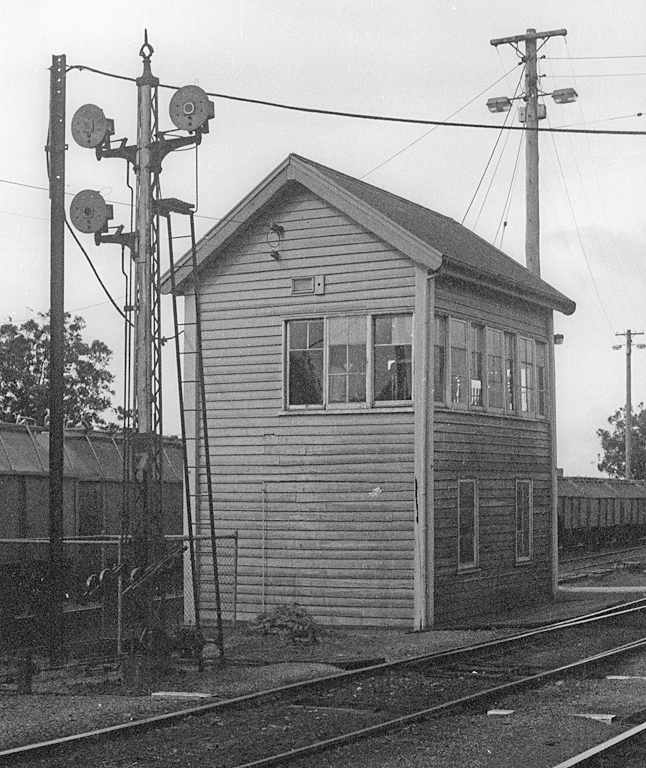
ABOVE: Ararat B box looking towards Melbourne. circa 1980. (photo courtesy David Langley)
BELOW: The undignified end for Ararat B box, bulldozed and set on fire, after 93 years of faithful service to the railways.
Photo by Chris Wurr.
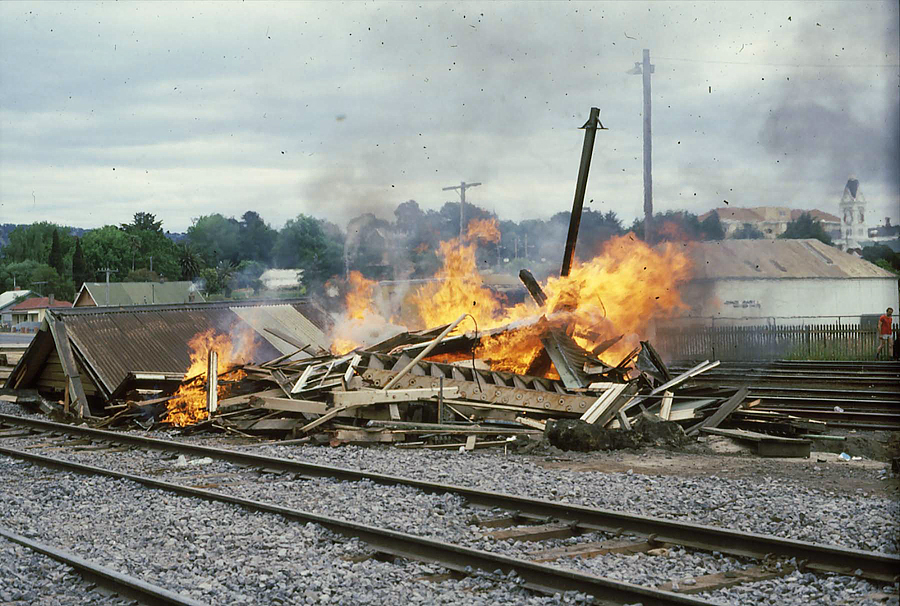
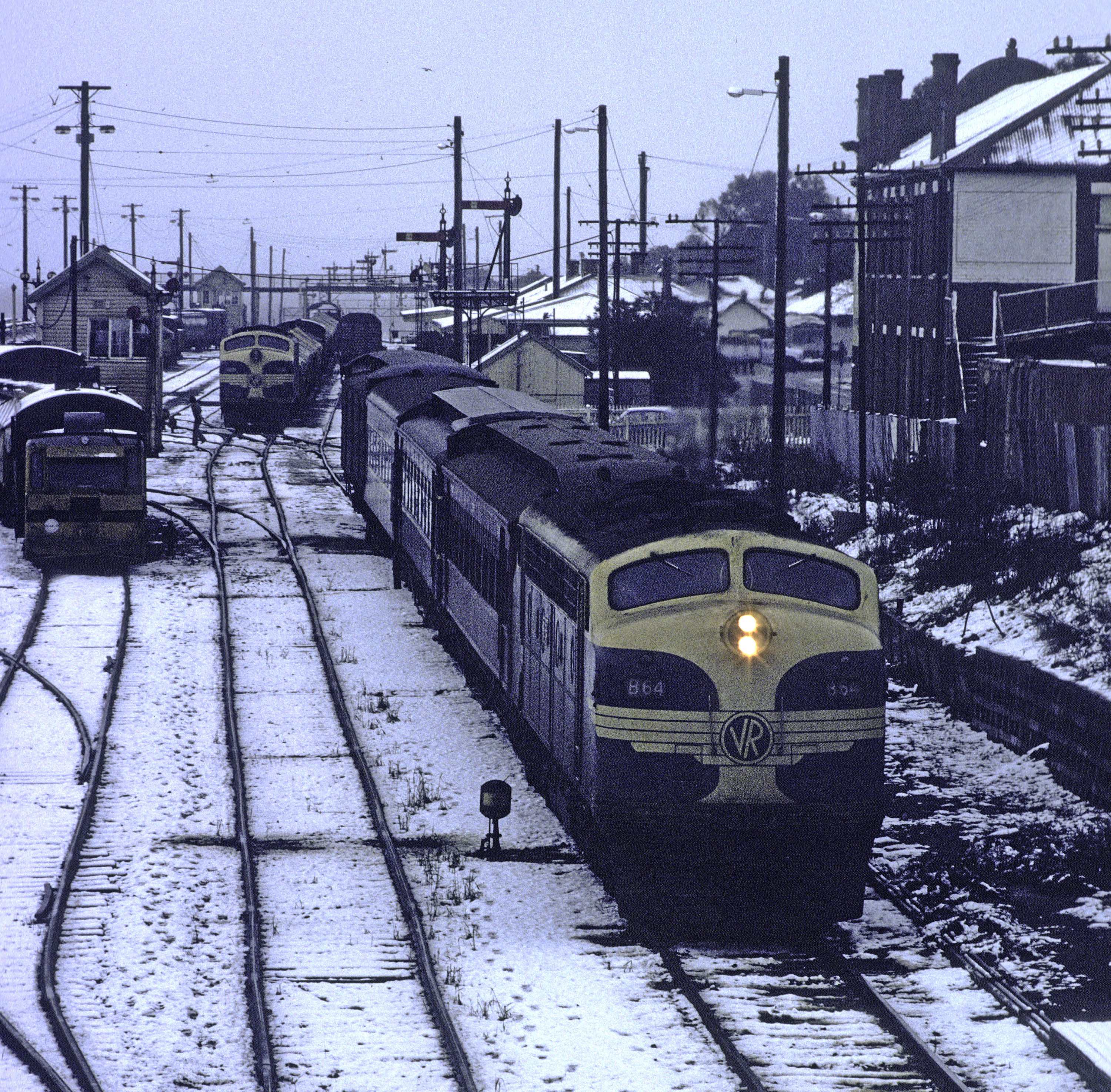
ABOVE: A rare snowfall at Ararat as B 64 departs on the Spencer St. to Horsham morning pass.This slide was hopelessly underexposed due to my ignorance about what snow does to exposure meters but it has been semi salvaged by my new film scanner. June 23 1981.
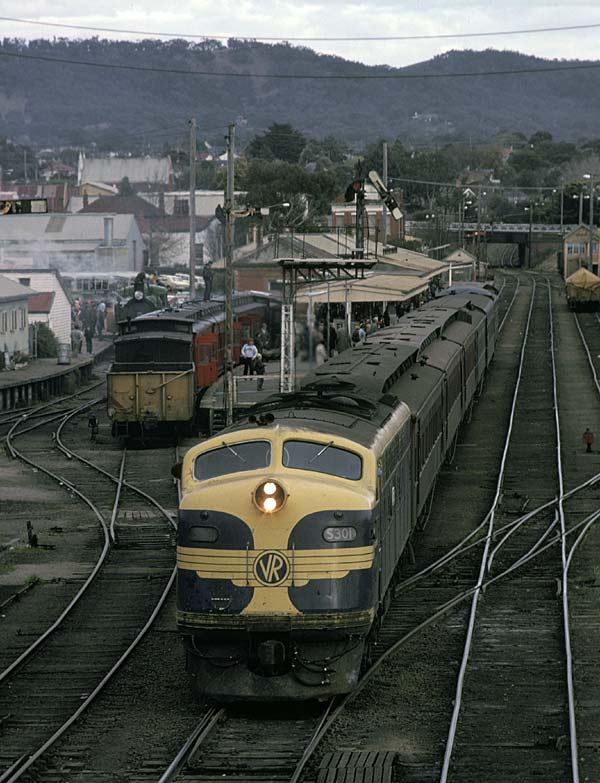
ABOVE: S 301 departs Ararat on a Dimboola to Spencer St. pass whilst K 190, on an enthusiast special, takes water, the track that the passenger cars are standing on was called the "Portland Dock" because that is where Ararat to Portland trains departed from. June 1981.
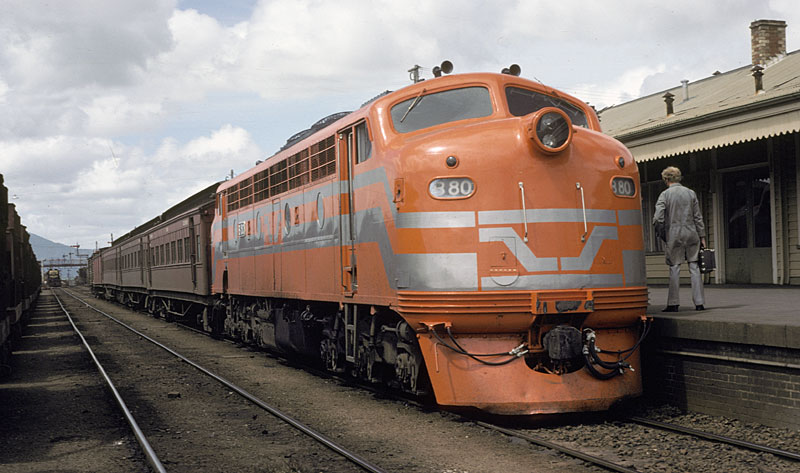
ABOVE: October 7 1981 was a red letter day for me as I was rostered as the fireman on the first run on the Horsham train with the brand new N passenger cars, the so called "New Deal for Country Passengers" Unfortunately the N set was "red carded" (declared unfit for service) at Spencer St. and a replacement set was hastily marshalled. The paper in Ararat had announced this day as the first run of the "brand new cars" so quite a few people, including the press, were at Ararat to see the new train. It must have been quite a disapointment to see a motely collection of non air conditioned wooden cars arrive in their place. At least the loco was nice and shiny!
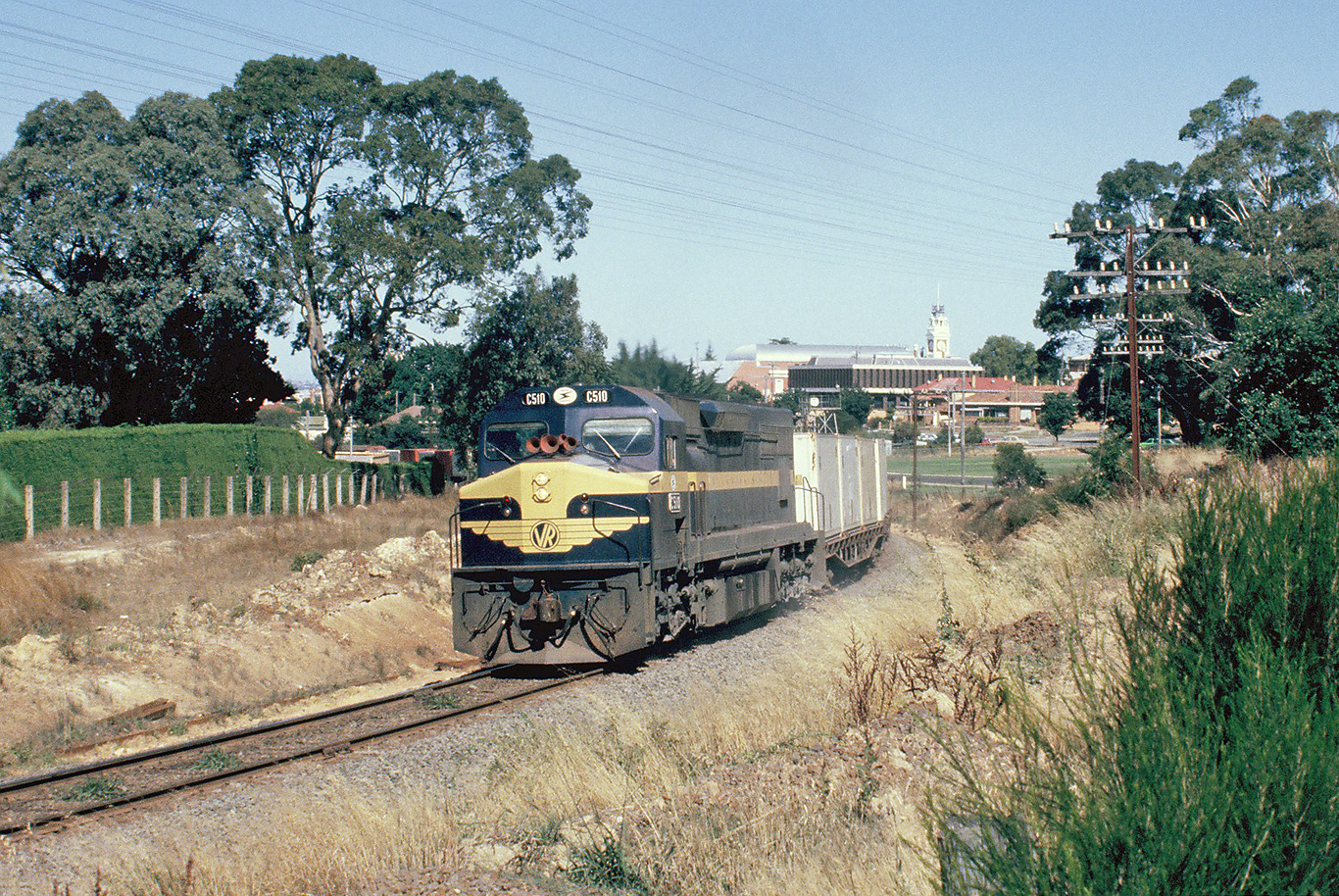
ABOVE: C 510 departs Ararat on a down "jet" Jan 31 1981. (photo courtesy Ron Woods)
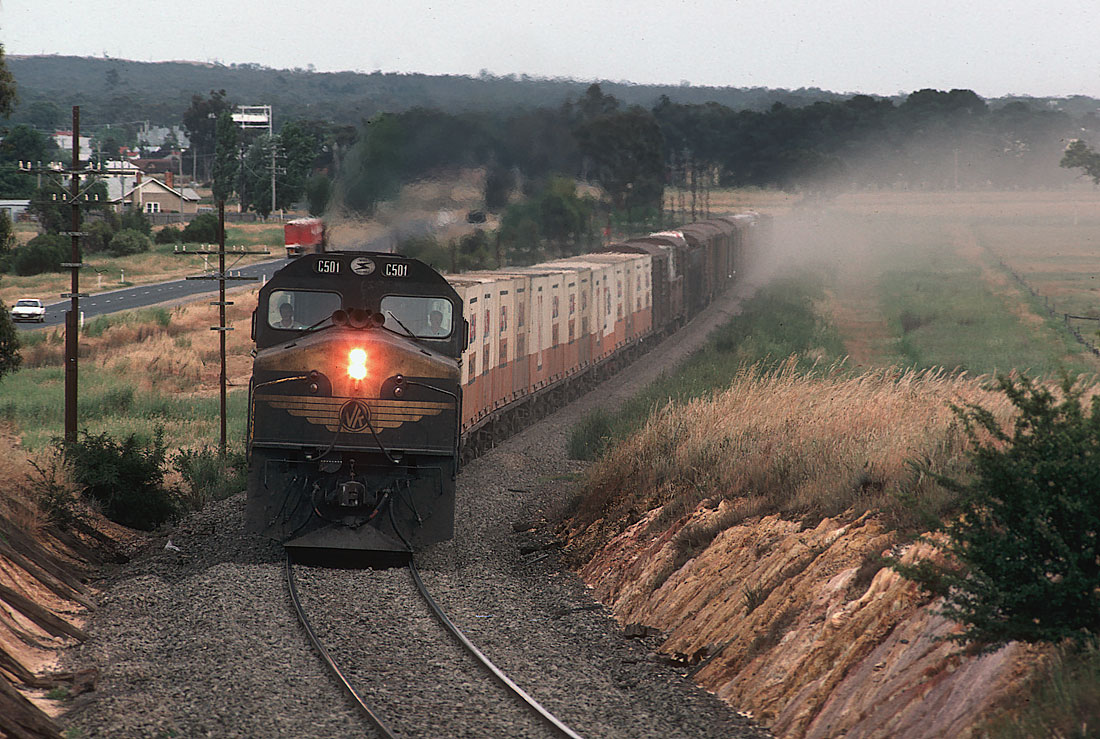
As soon as it was delivered in 1977, C 501 went straight onto standard gauge. This photo was taken just after it came off the standard gauge and shows it on an up Serviceton to Dynon "jet" about a mile east of Ararat. 1982.
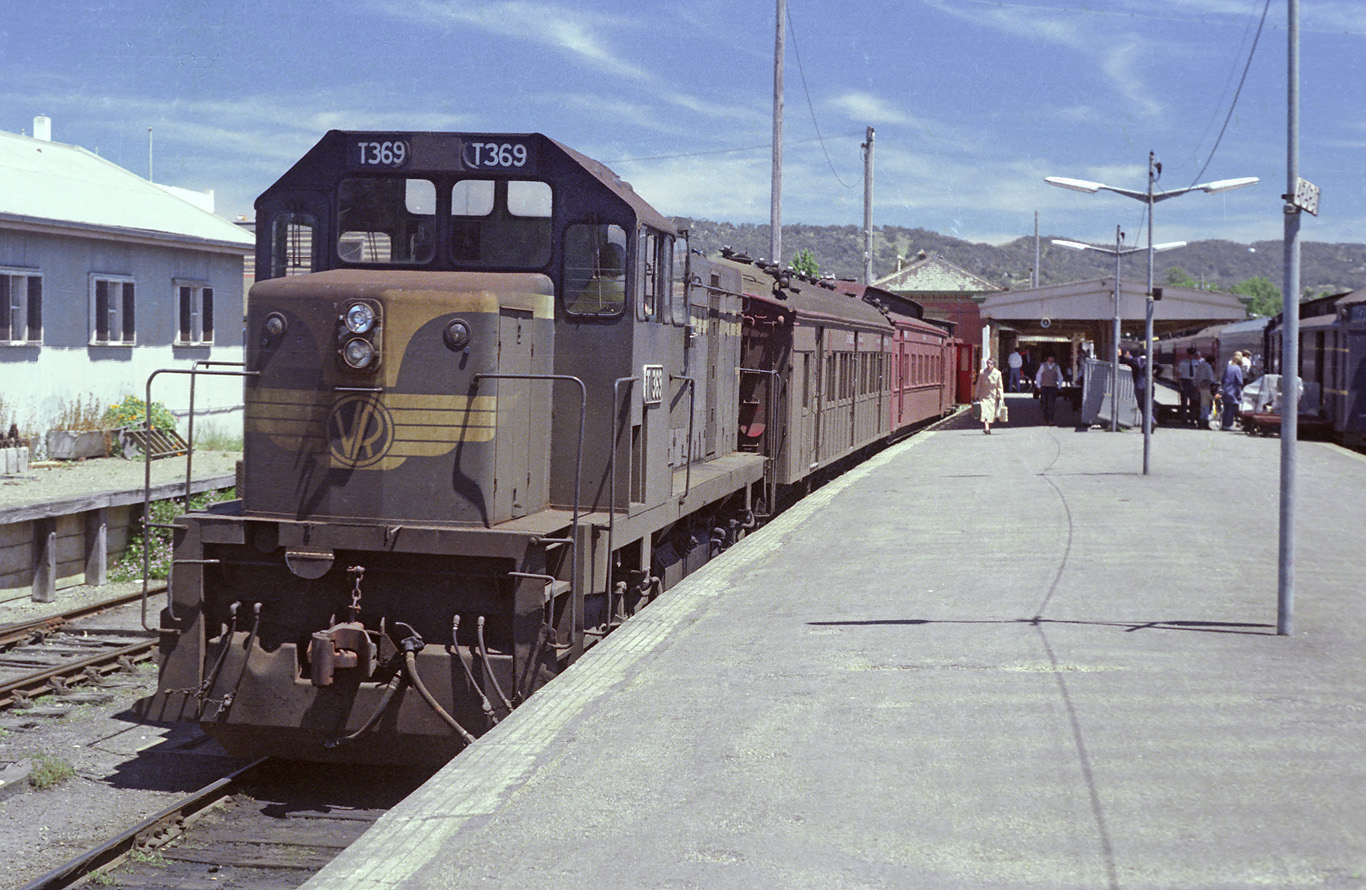
ABOVE: In the late 70's the Ararat to Portland service was provided by a DRC railcar. Due to problems with reliability of the DRC's it was often replaced with a pass. T 369 awaits departure with the Portland train while the Spencer Street to Horsham pass. is seen on the right. 1978.
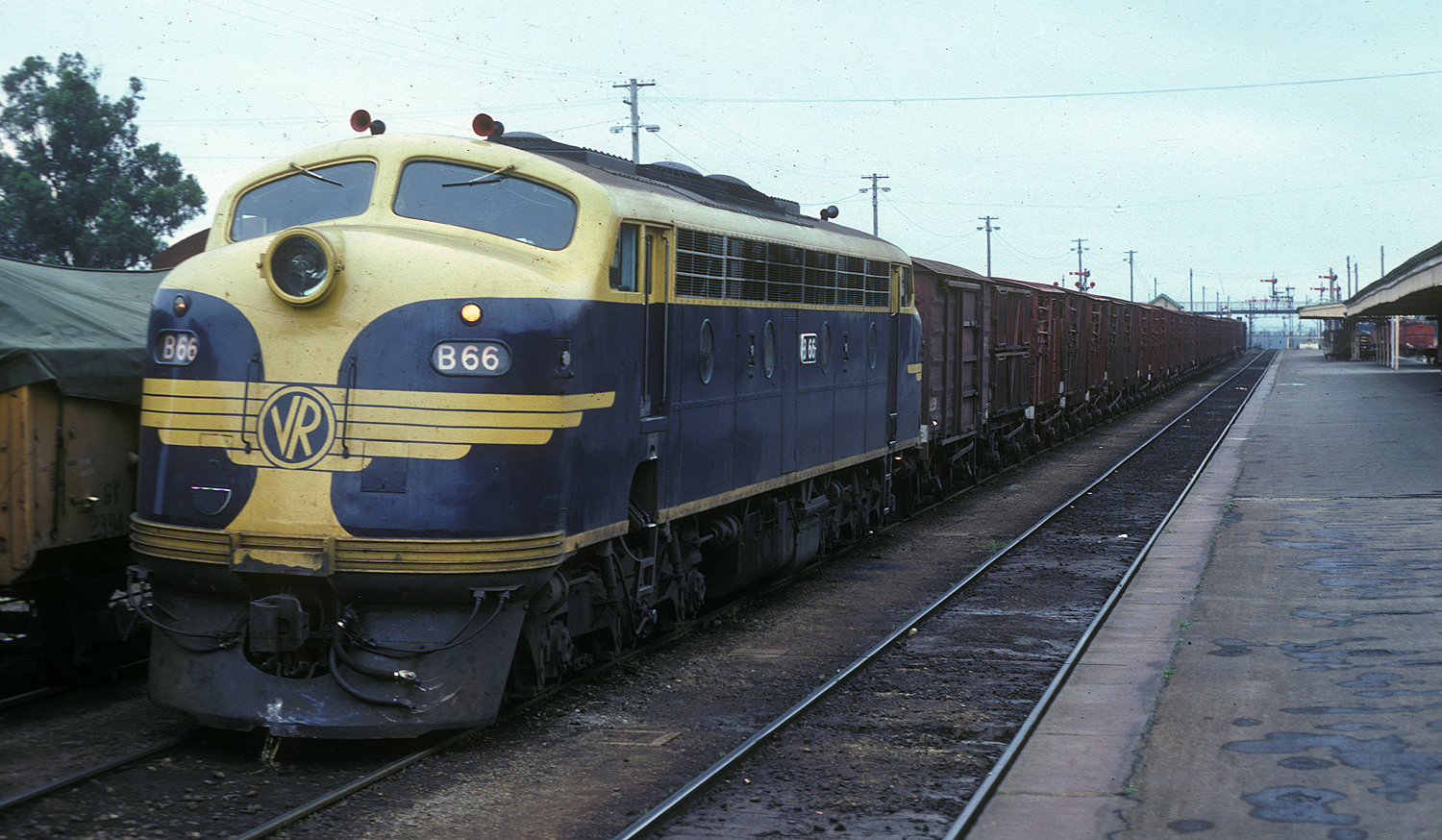
On a dreary December 1979 day at Ararat, B 66 awaits departure on a
westbound empty stock train consisting mainly of M cattle wagons.
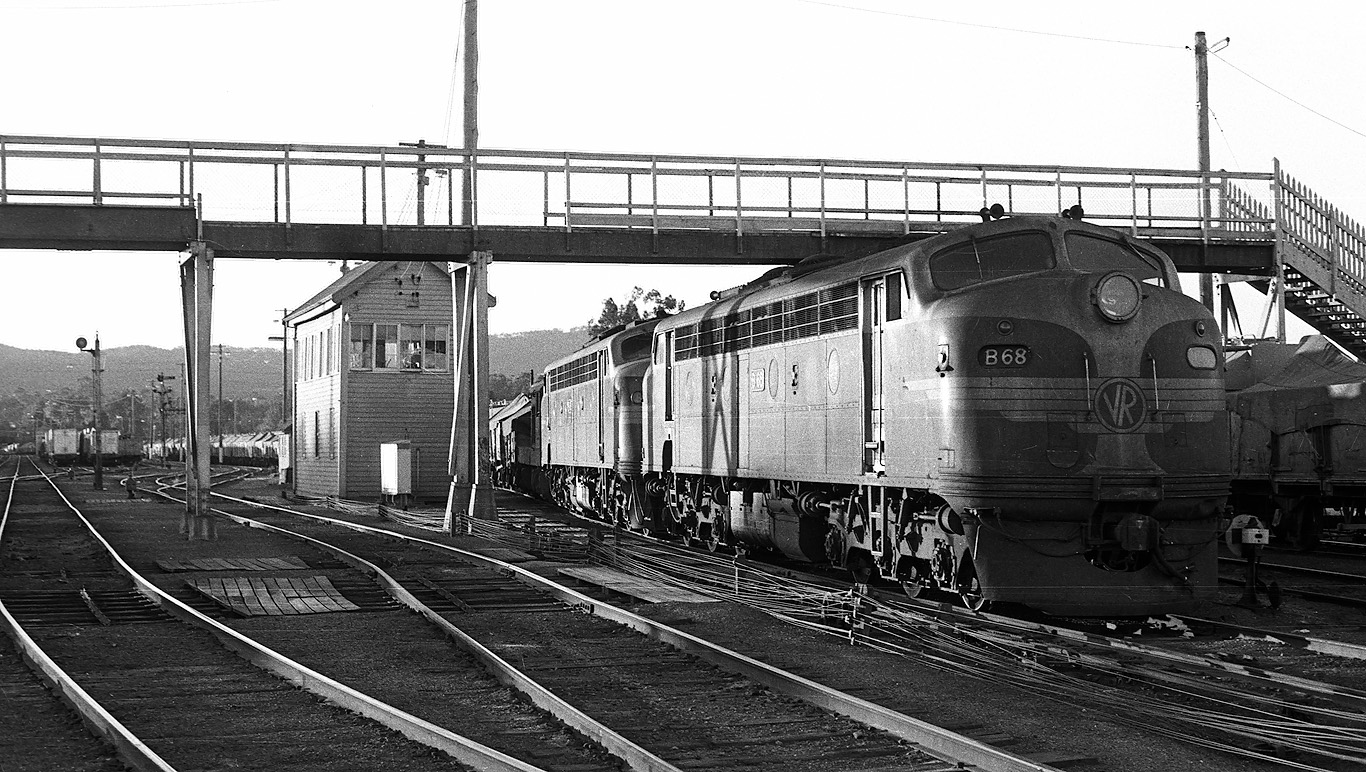
ABOVE: B 68 - B 62 arrive Ararat with 60 loaded GY's on New Years Day 1980. During the wheat season Ararat was a very hectic place. The footbridge was partially demolished by a train that derailed as it passed under, not long after this photo was taken. The building was "Ararat A" signalbox which controlled all movements at the east end of the yard as well as controlling the junctions of the Maryborough, Ballarat and Maroona lines.

ABOVE: A pair of C class depart Ararat on a Adelaide to Melbourne "Jet" in 1980. I had just transfered to Ararat as a Fireman
and relished the fact that I could walk two blocks from where I lived to capture images like this whenever I felt like it!
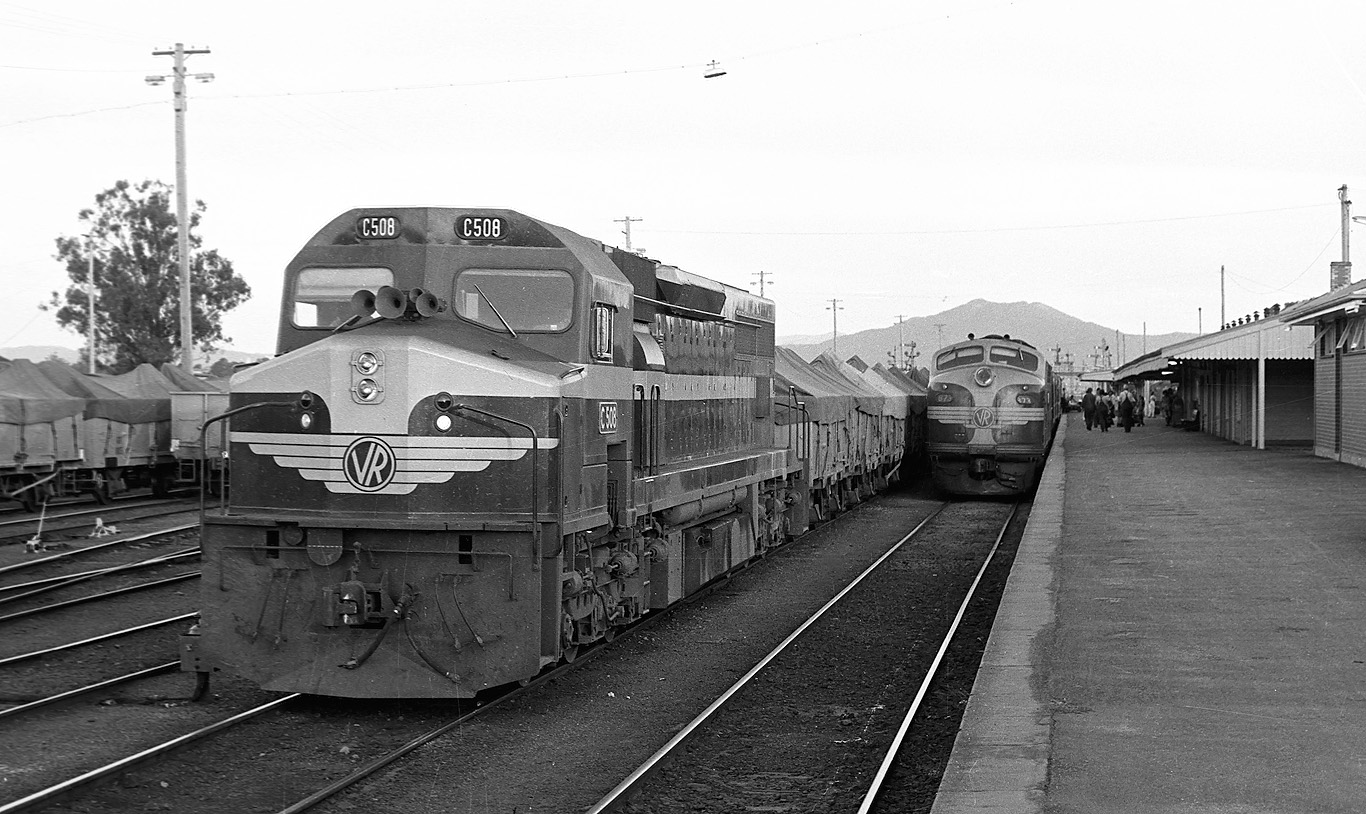
ABOVE: B 73 has just arrived at Ararat on the afternoon Spencer St. to Dimboola pass. as C 508 waits to follow the pass. to Murtoa on a empty wheat train. 1979
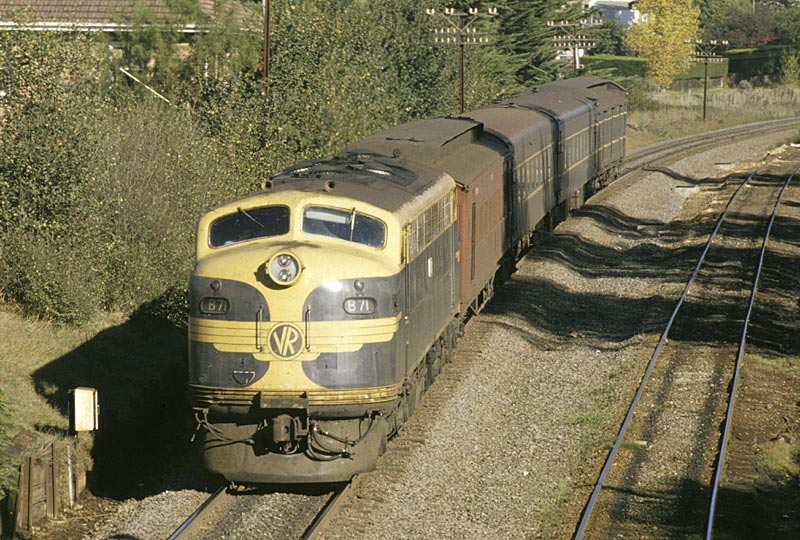
ABOVE: B 71, which would later be rebuilt as an A class, drops down into Ararat on the 6.55am Dimboola to Spencer St. pass. 1980.
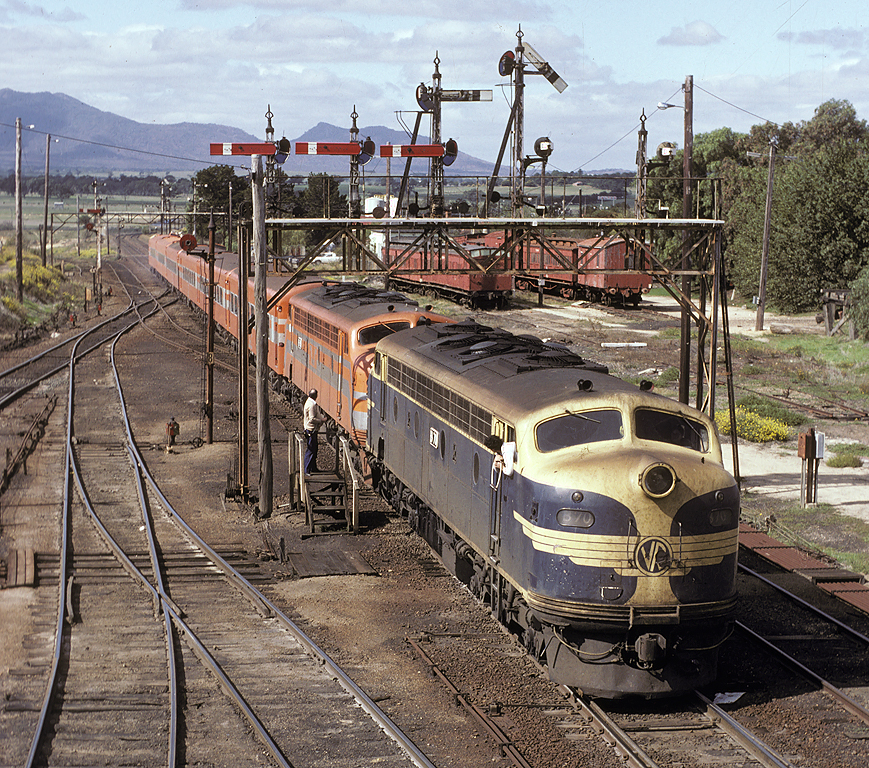
ABOVE: The Melb - Horsham Sunday excursion train arrives Ararat, the fireman has just exchanged the staff with the signalman at A box, Normally the staff would be handed up at A box and the westward staff would be picked up at B box but by 1983 on Sundays, only one signalman would be rostered on and he had to operate both boxes for the little traffic running. May 1983. (photo courtesy Noel Bamford)
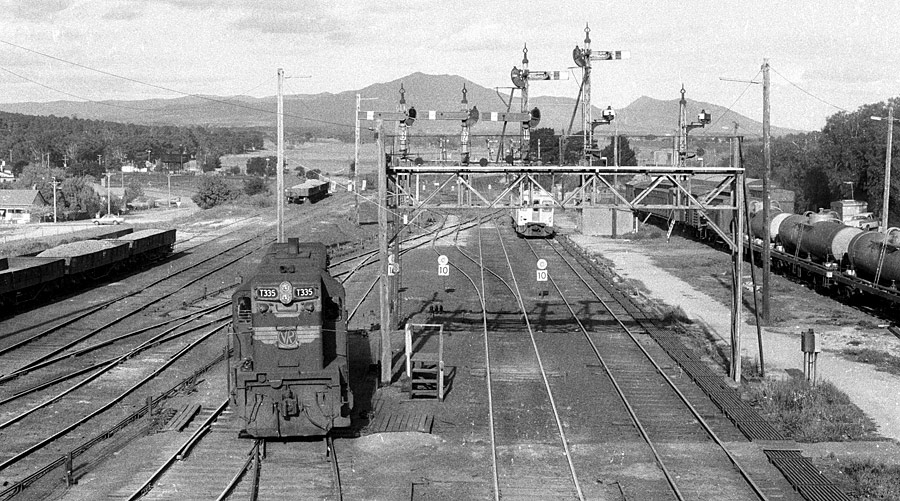
ABOVE: The afternoon DRC from Portland arrives at Ararat as T 335 comes "off the pit". The footbridge this photo was taken from was damaged by a derailed goods train and subsequently pulled down not long after this photo was taken. 1980
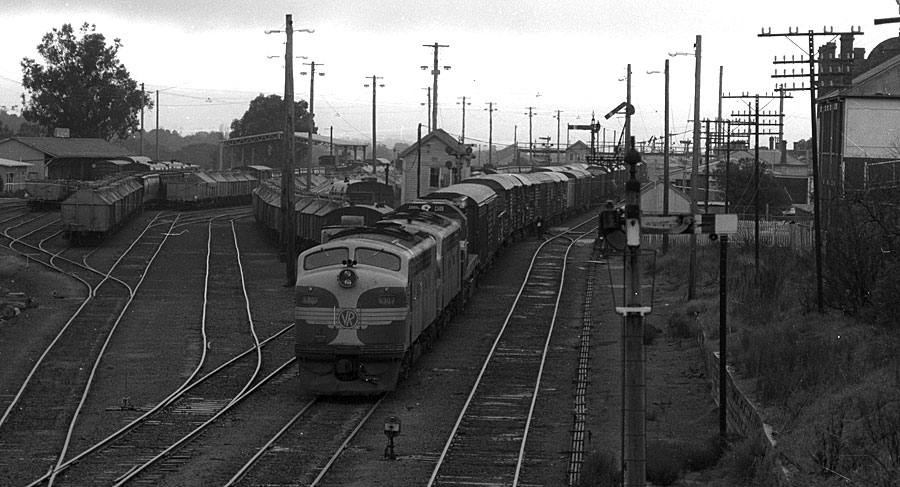
A view of Ararat looking East with a down goods powered by S 307 - B - C awaiting the arrival of an up goods before heading West. 1980
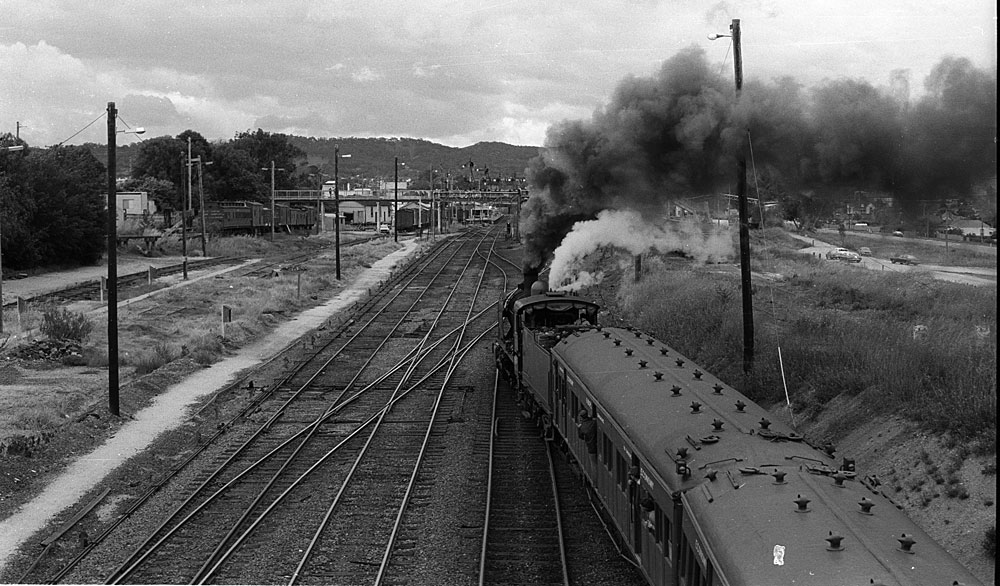
Looking west at Ararat yard as K 190 arrives off the Maryborough branch on a railfan special. 1981.
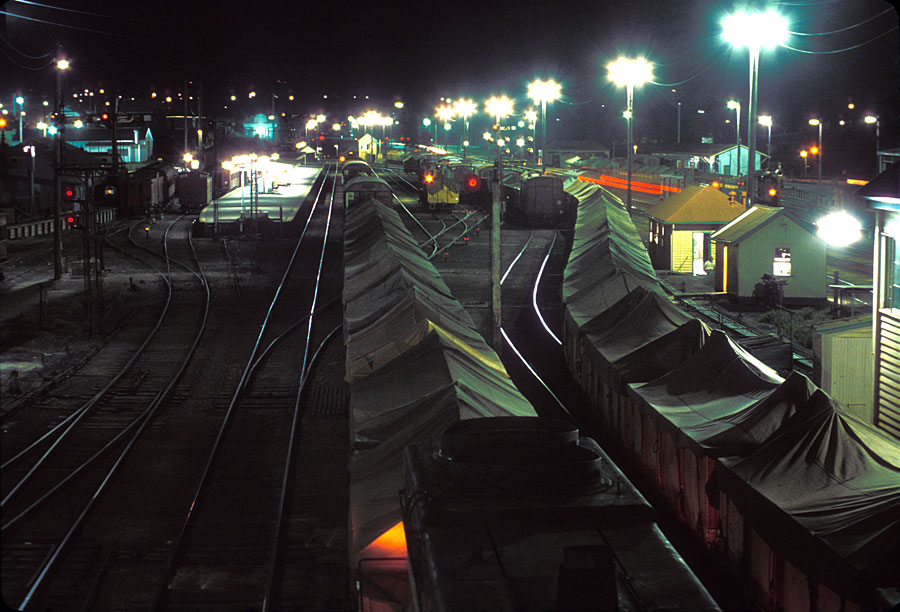
By day a visitor to Ararat yard in the late 70's might have wondered why there were so many empty tracks
but come night time Ararat positively came alive with congestion being the norm, particularly during the
wheat season when this photo was taken. A visit to Ararat at night now would present a vastly different scene!
This view is from the long gone footbridge looking west, Ararat A signalbox is seen at the extreme right.
Feb 1 1979.
Photo courtesy Peter J. Vincent
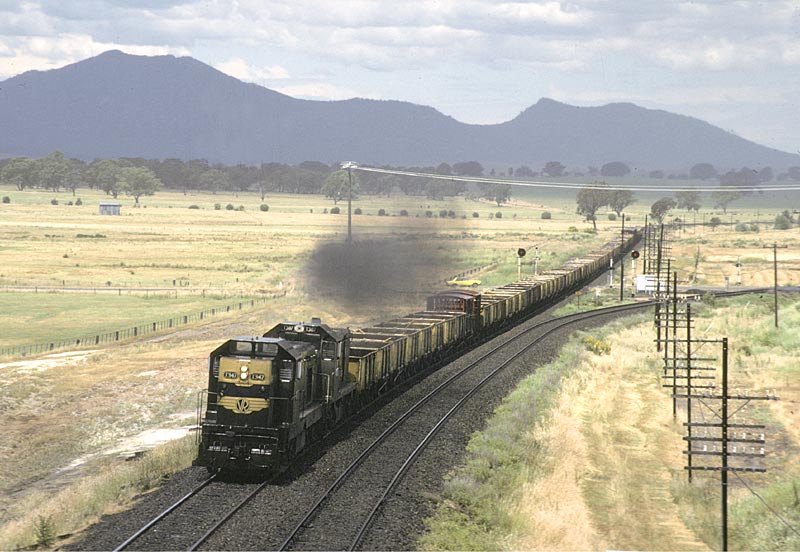
ABOVE: T 347 - T 387 bring a Ballarat to Ararat goods into Ararat.
The line to the right is the track to Maroona where the track junctions again to Geelong or Portland.
The mountain in the background is called Mount Langhi Ghiran, also known as the "pregnant lady 1986.
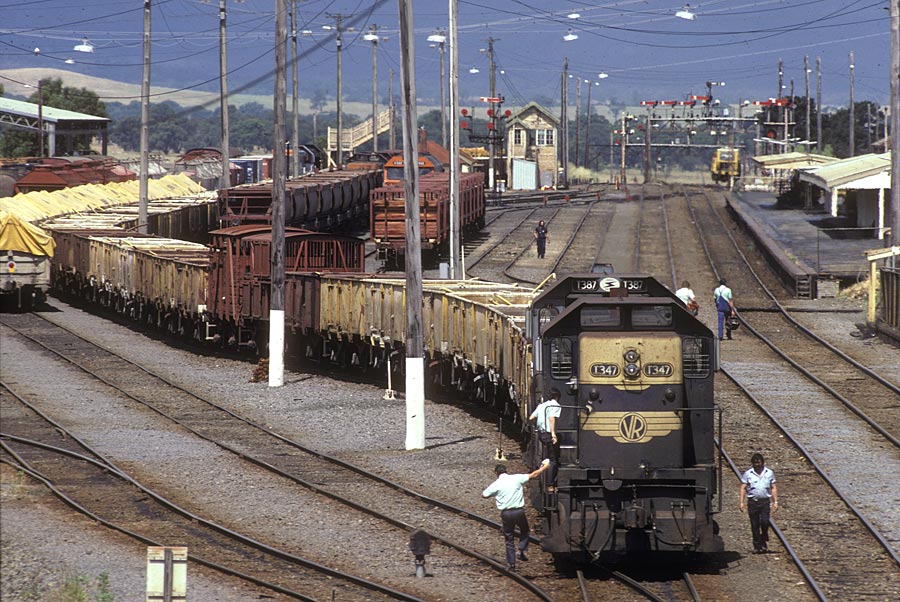
ABOVE: By the time this photo was taken, Dec 1986, Ararat B box had been abolished due to commisioning of CTC west of Ararat. Ararat A box, seen in the distance, survived a few more years until the line through Ararat was converted to standard gauge.
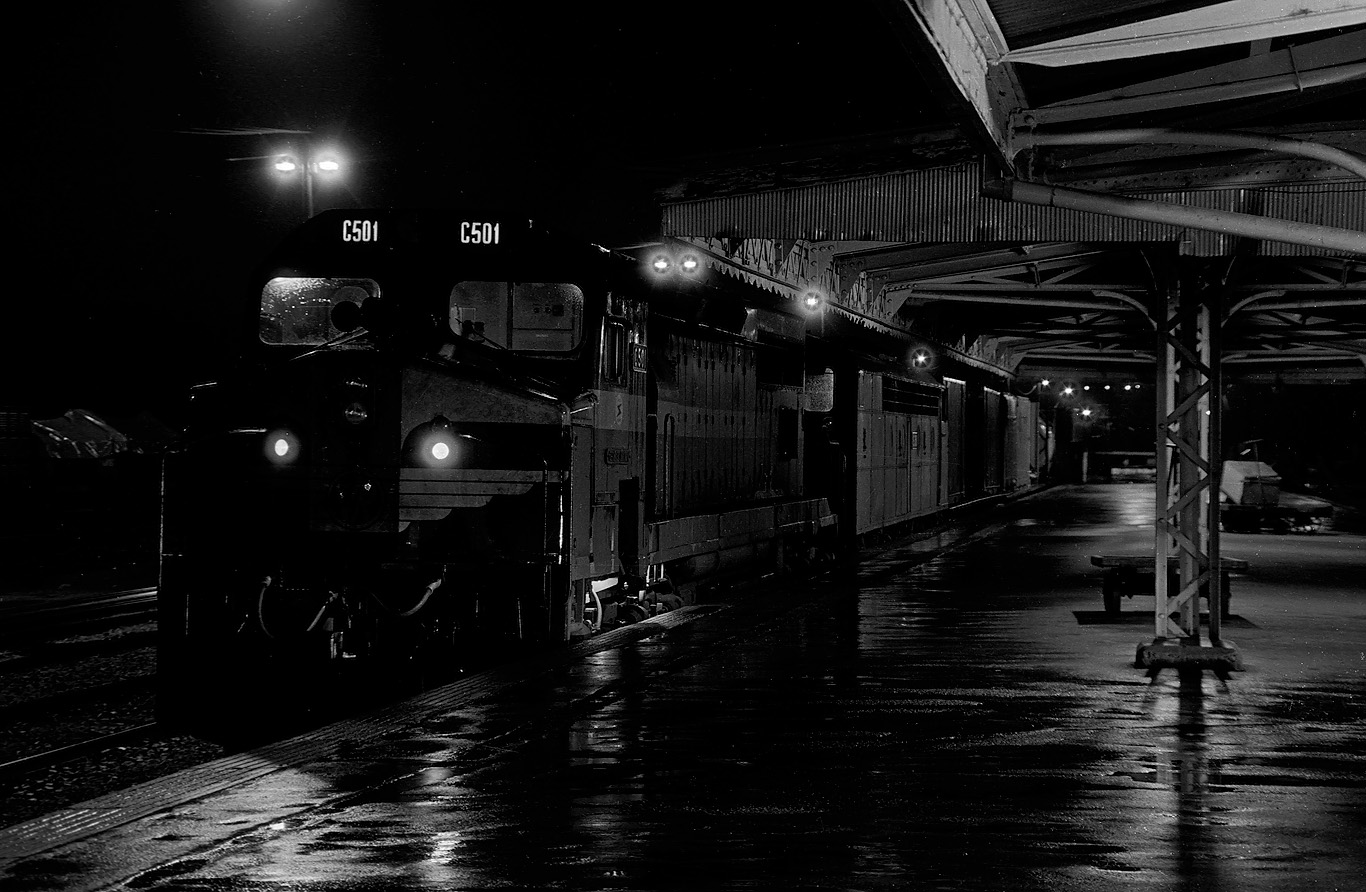
ABOVE: C 501 - S 308 wait at Ararat for a crew to take a down "jet" (9123) westward to Dimboola. The train consisted of 30 bogie wagons for a total tonnage of 1576 tonnes. July 16 1988.
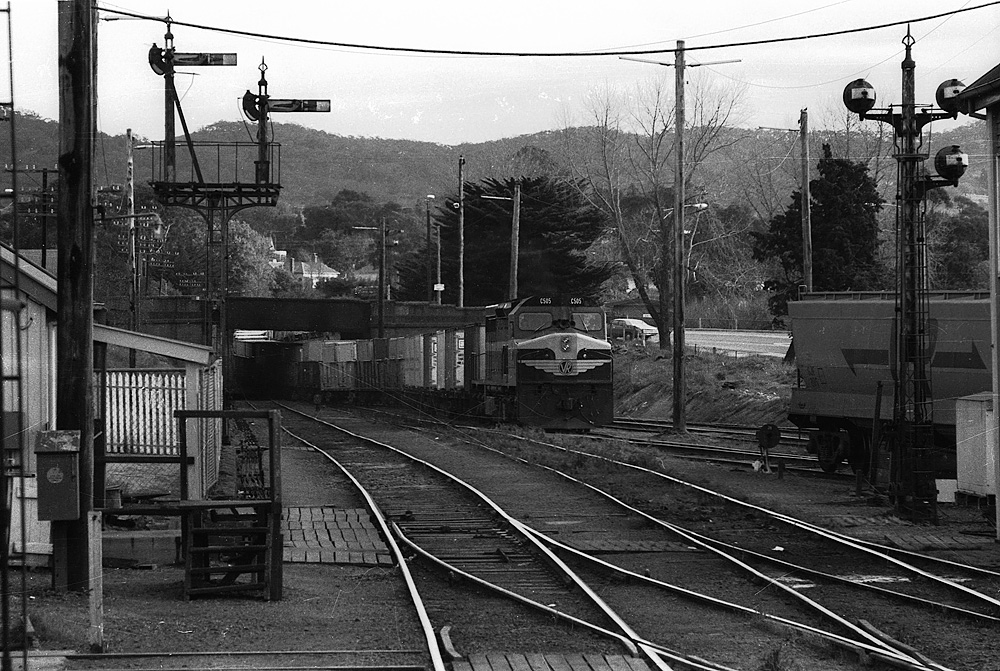
ABOVE: C 509 arrives Ararat yard on an up jet in 1979
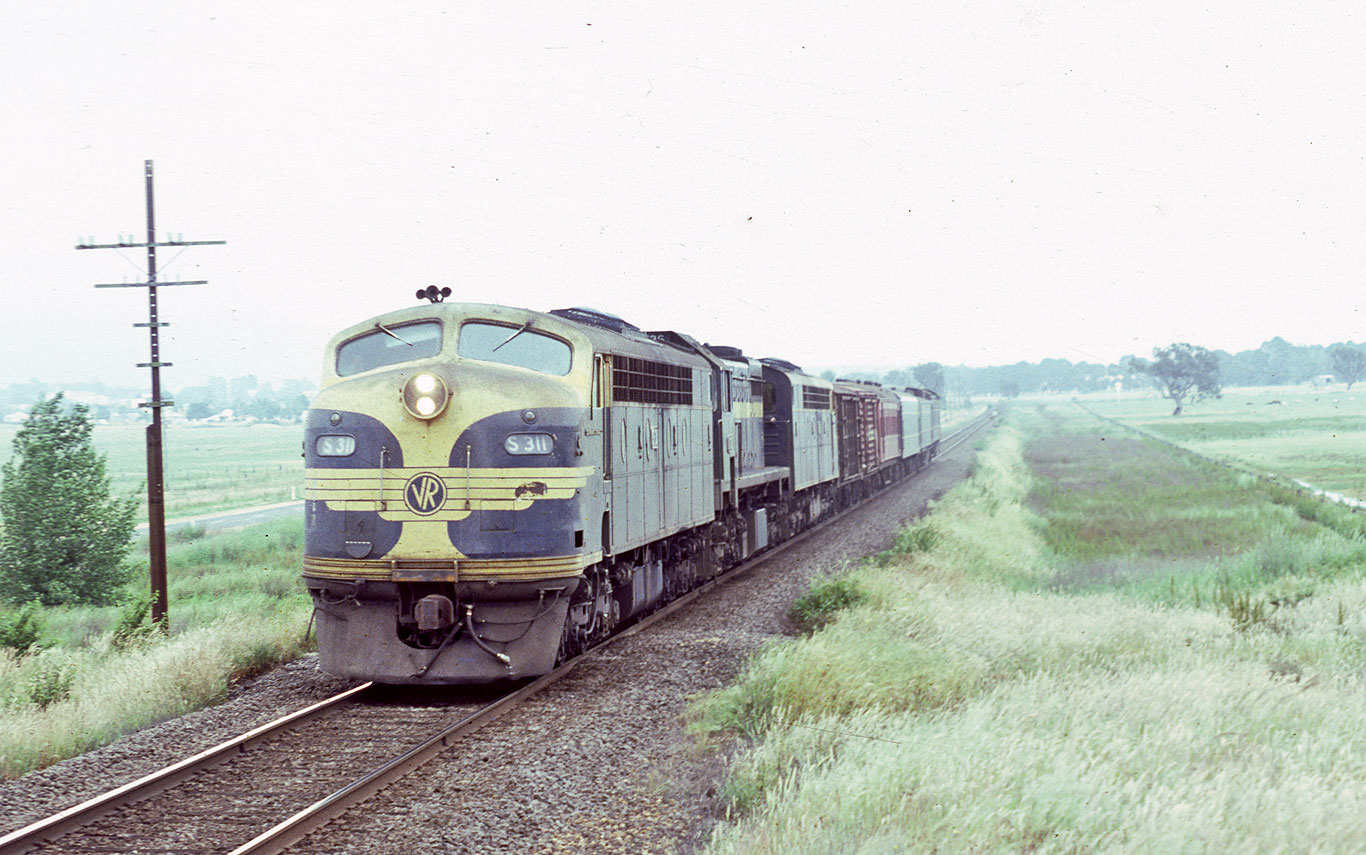
ABOVE: S 311, X 35 and S provide plenty of power for the morning up pass from Dimboola, photographed a few kilometres on the Melbourne side of Ararat. This train was often overpowered as it was used to get locos back to Melbourne quickly, Dec 1979.
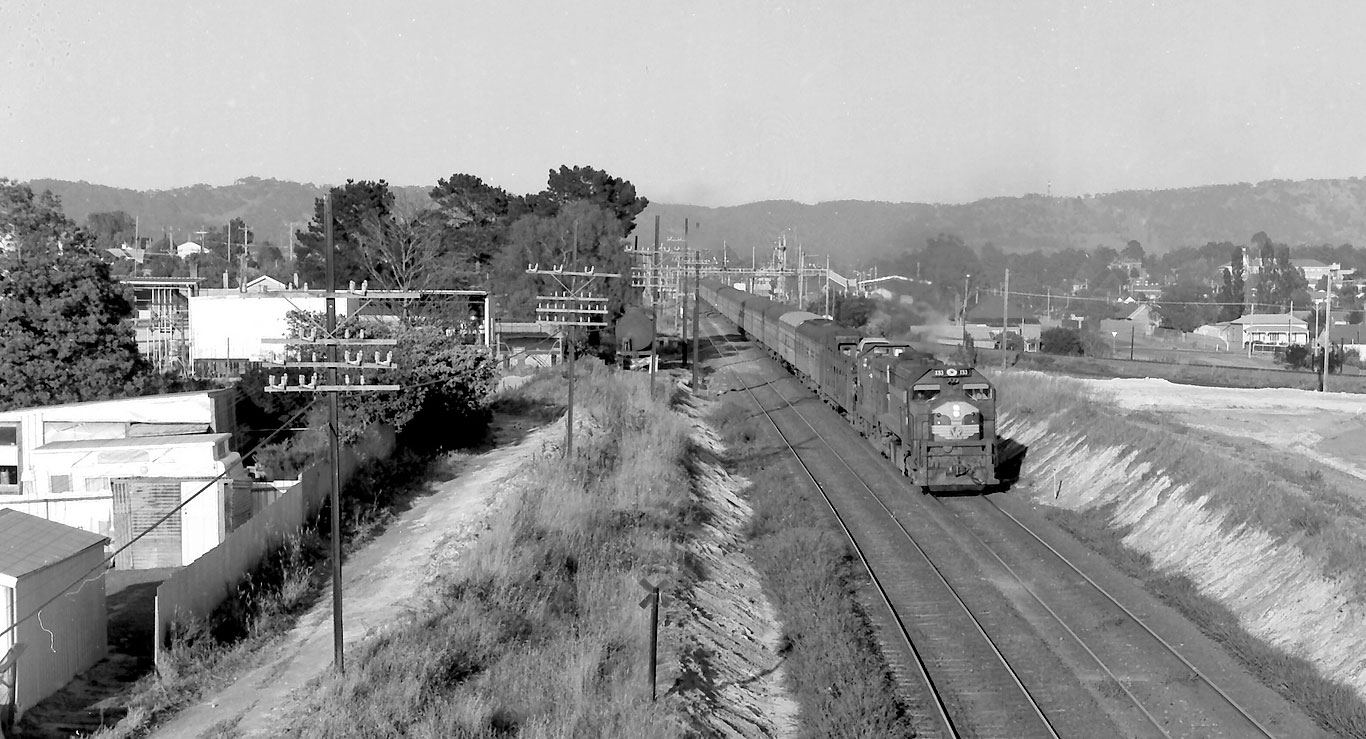
ABOVE: X 53 and T 363 get the up Overland started out of Ararat. The use of a T class on the Overland was extremely rare, Dec 22 1983. The T class would have limited the maximum speed to 60 mph instead of usual 70 mph. (photo courtesy Chris Wurr)
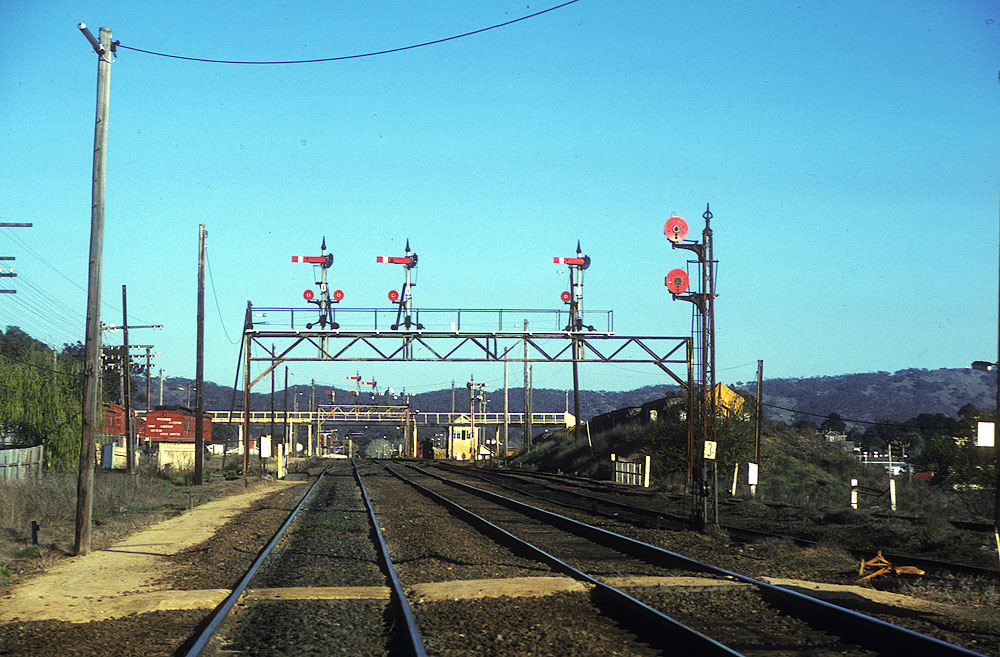
Trains arriving Ararat from the east were confronted with this signal bridge, left to right:
Home and discs from the Maroona line
Home and disc from Ballarat line
Home and disc from Maryborough line
Discs from the loco depot
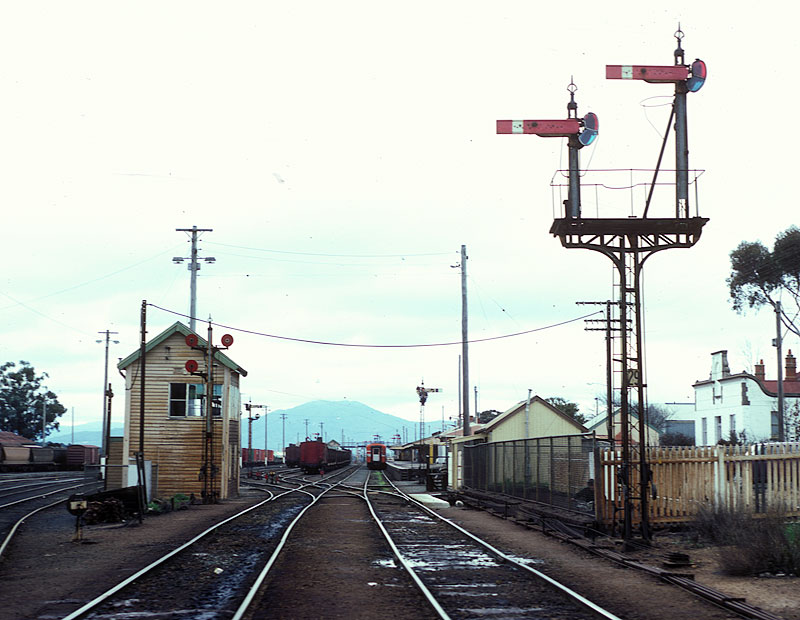
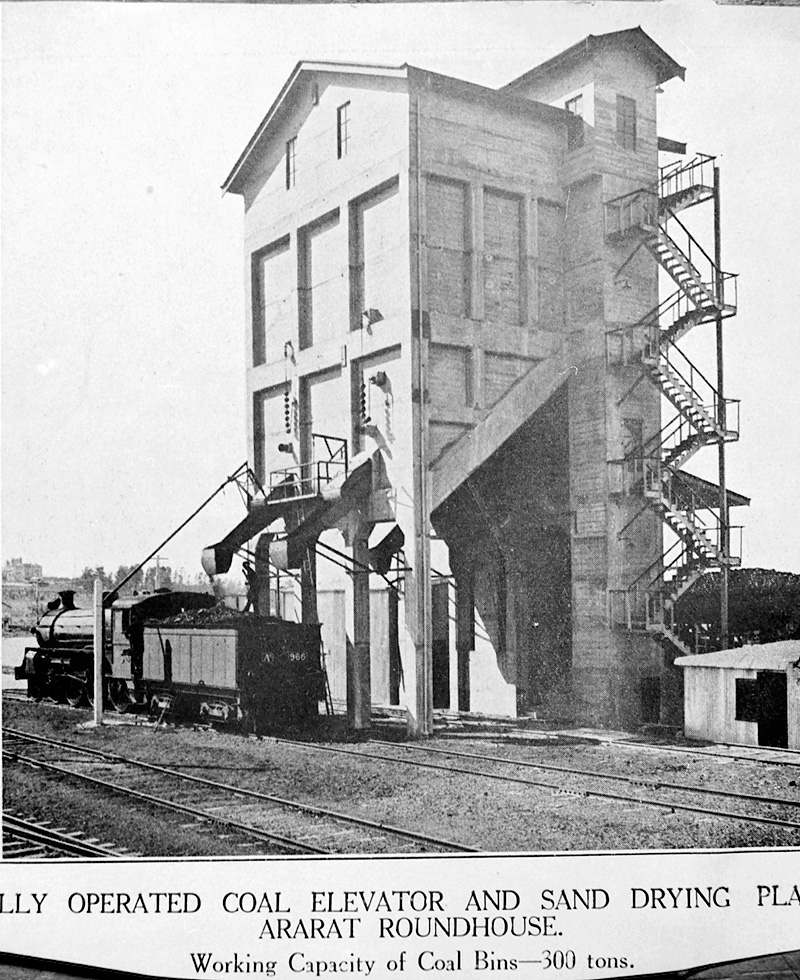
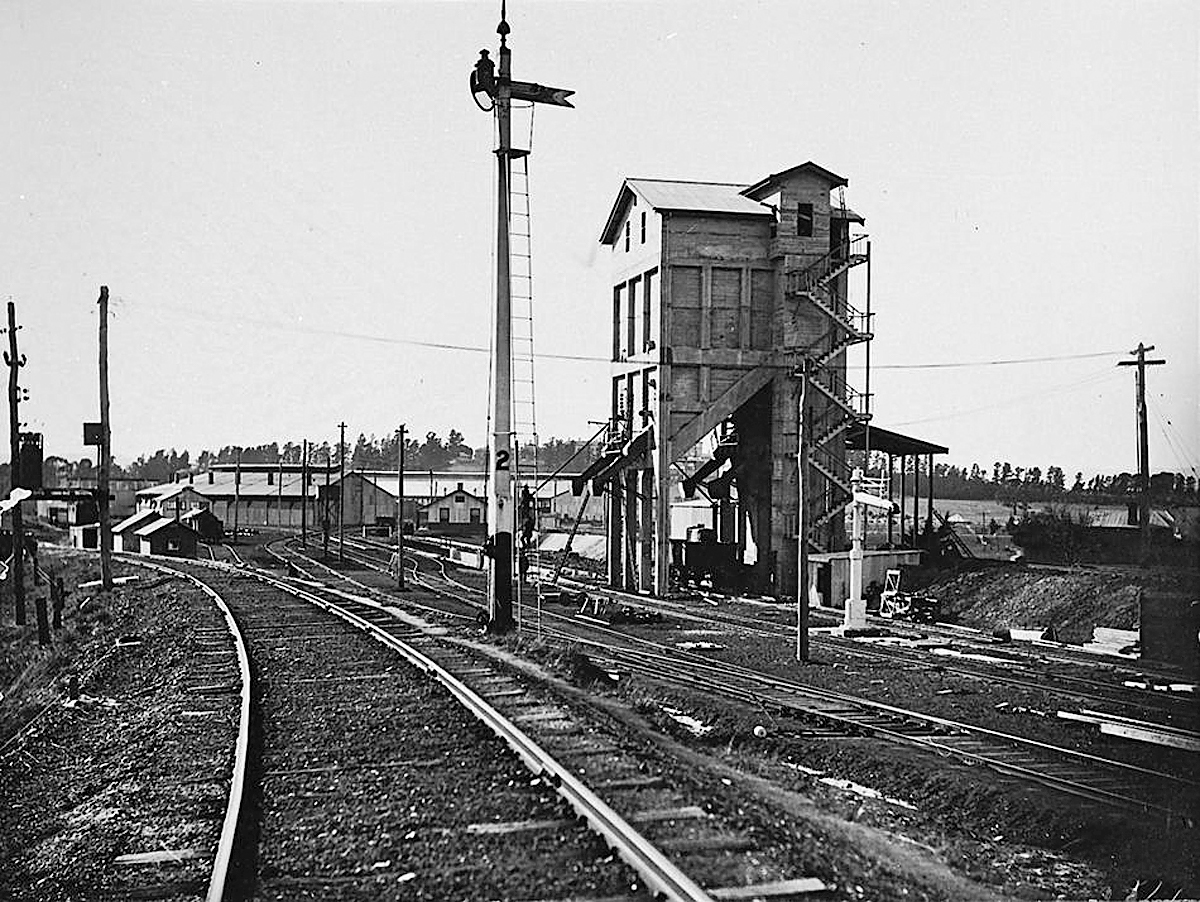
ABOVE: Ararat coal stage and loco depot, the photographer is standing on the Maryborough line, 1930's?
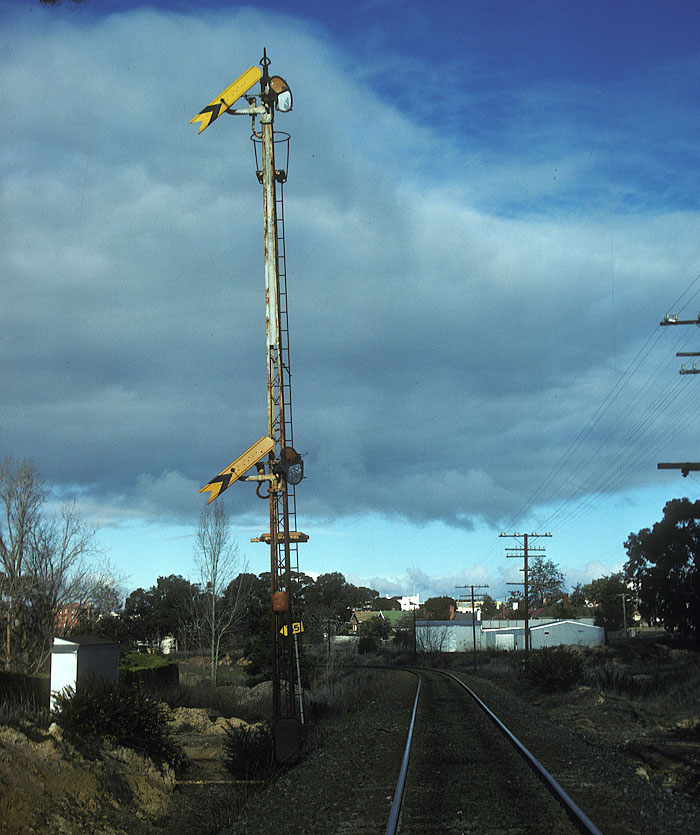
ABOVE: Ararat's up co acting distant signal operated by B box.
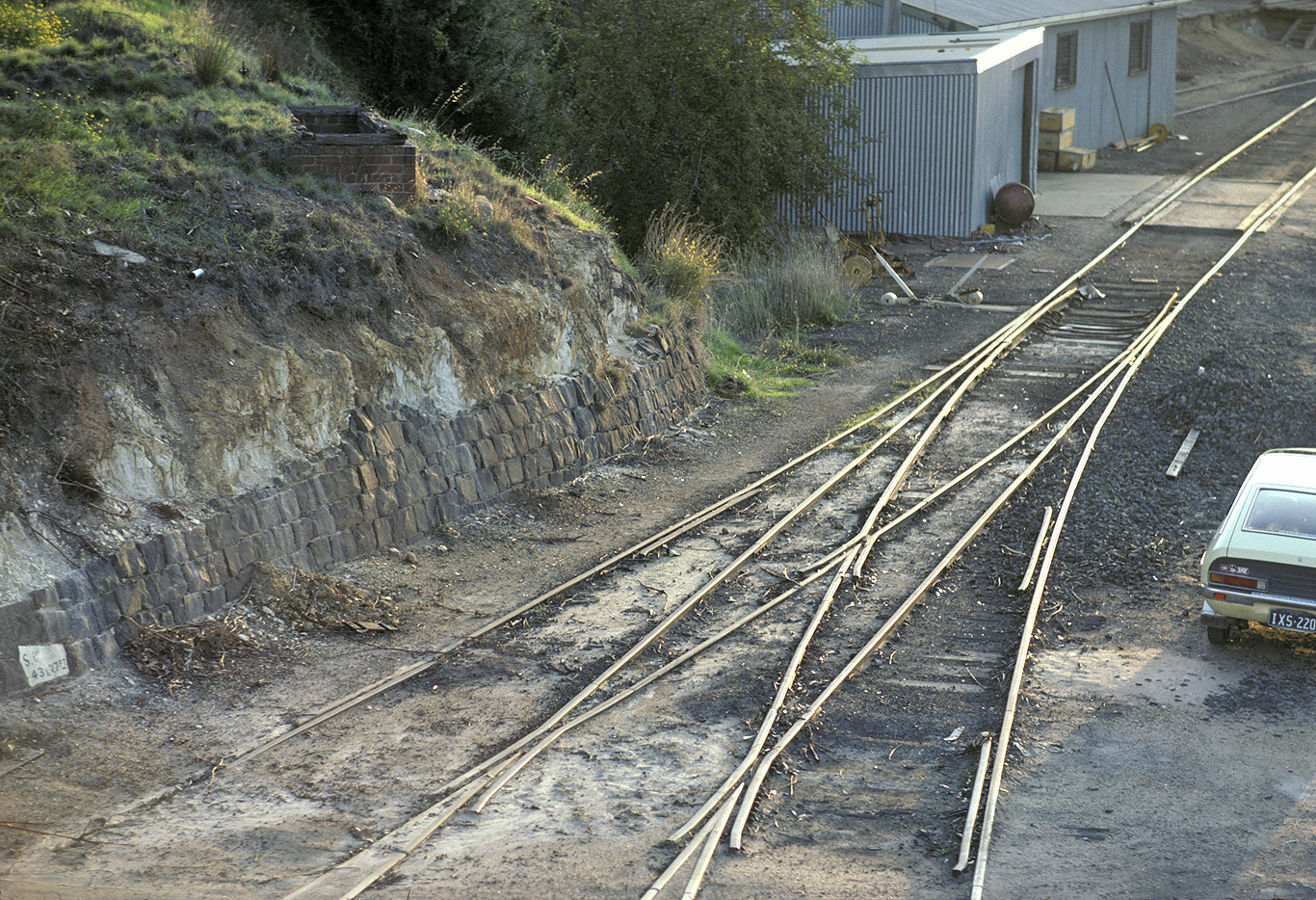
ABOVE: Quite rare, for Victoria, was this 3 way turnout on the track from the carriage dock to the stock yard sidings. April 15 1983. (photo courtesy Noel Bamford)
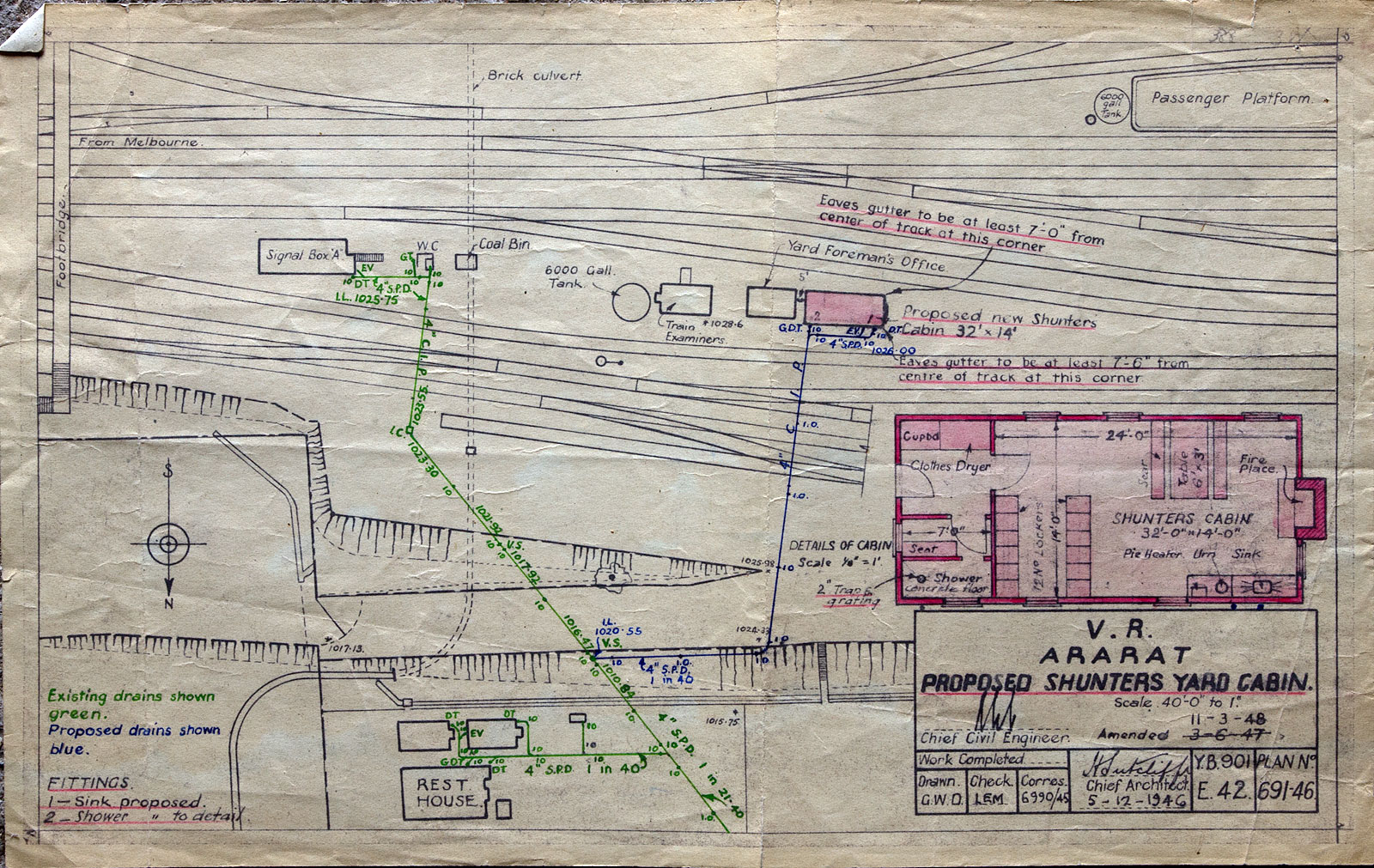
feel free to email me with any corrections or comments
page created